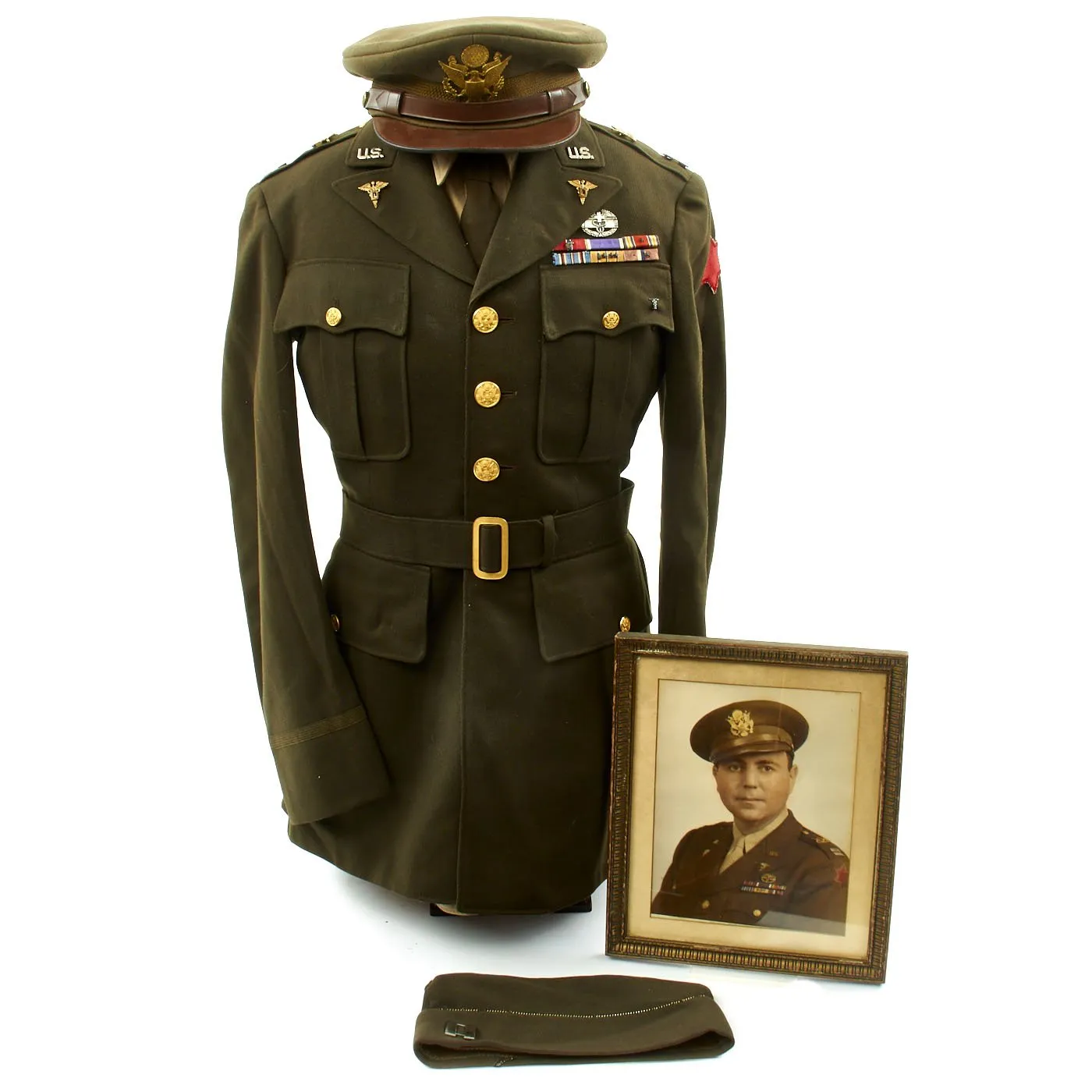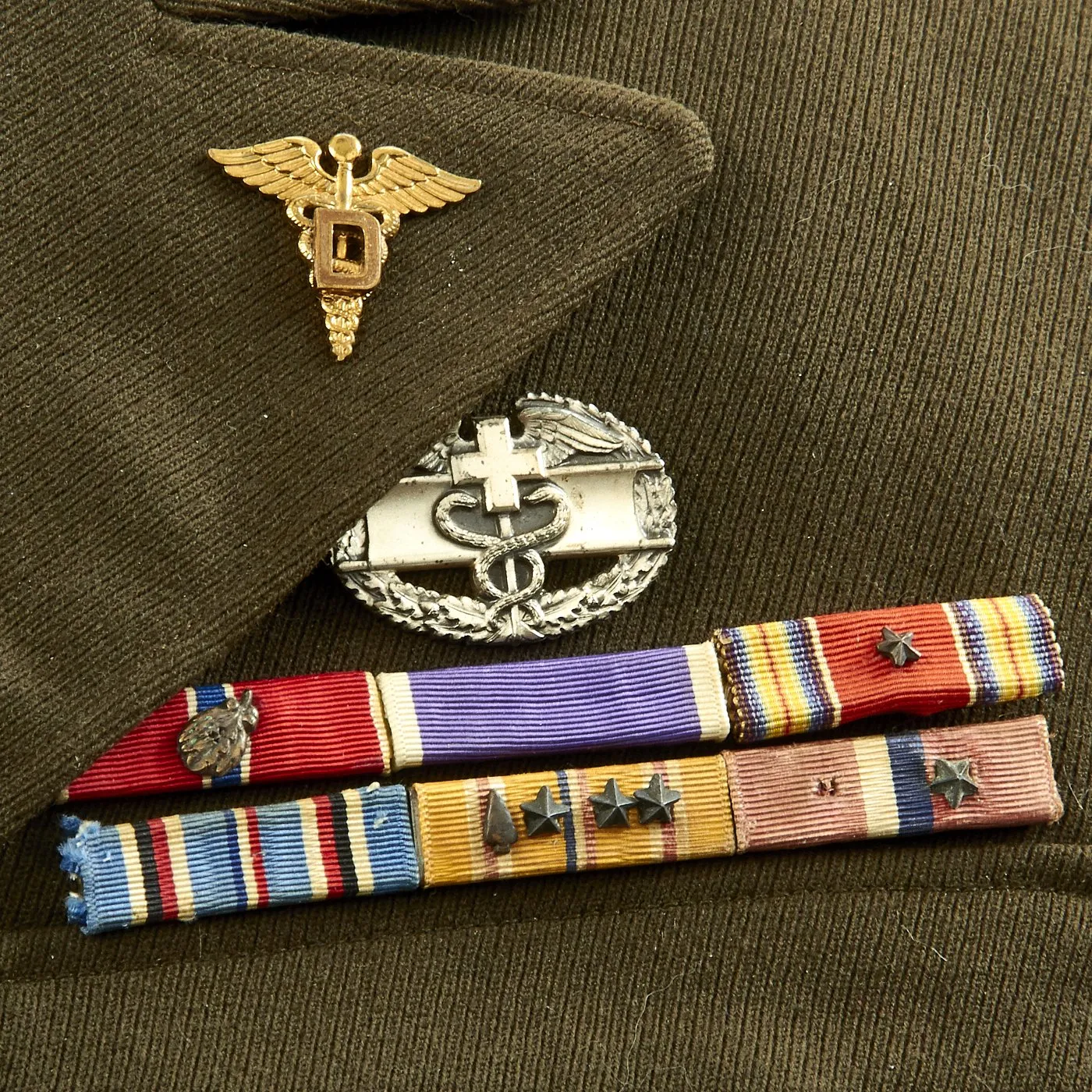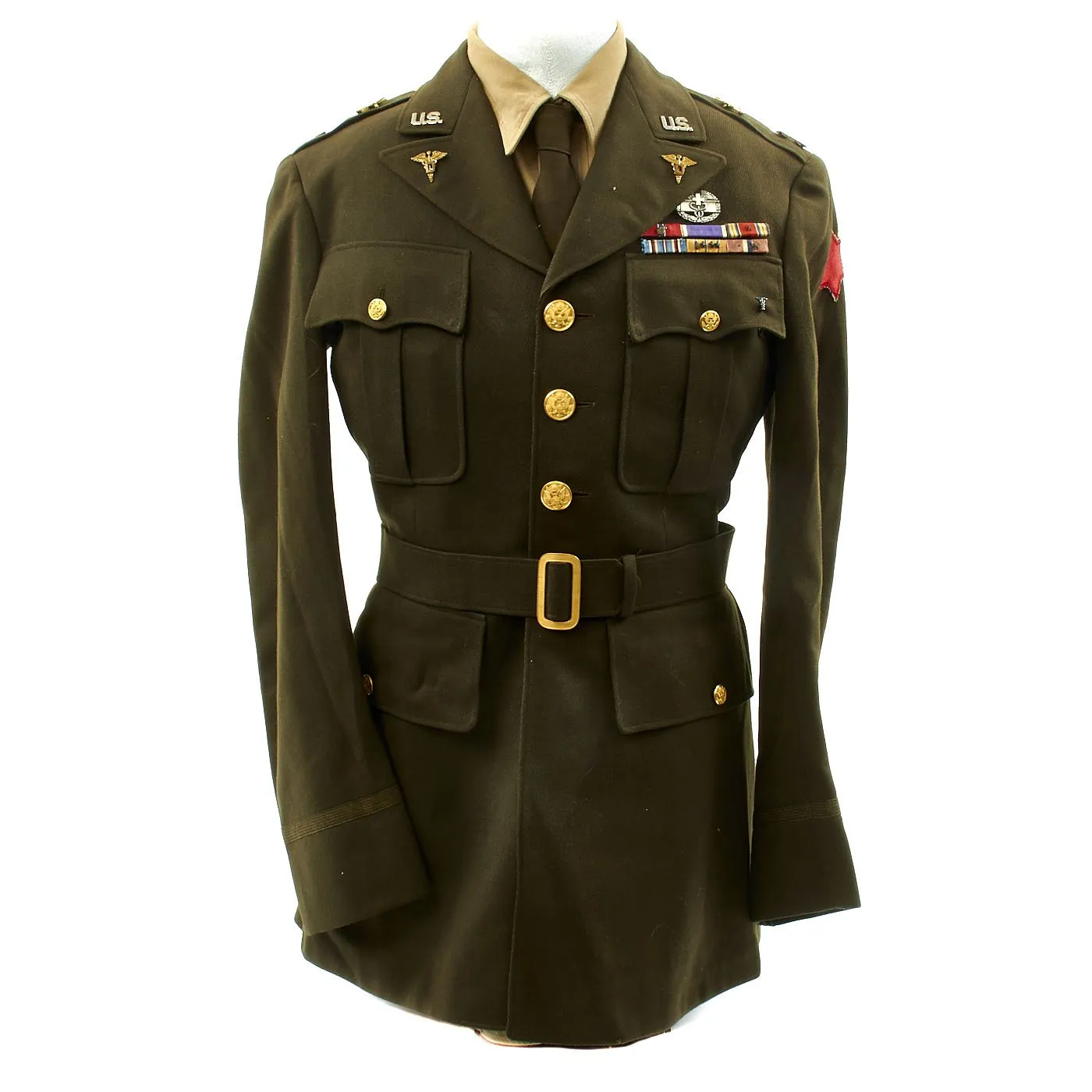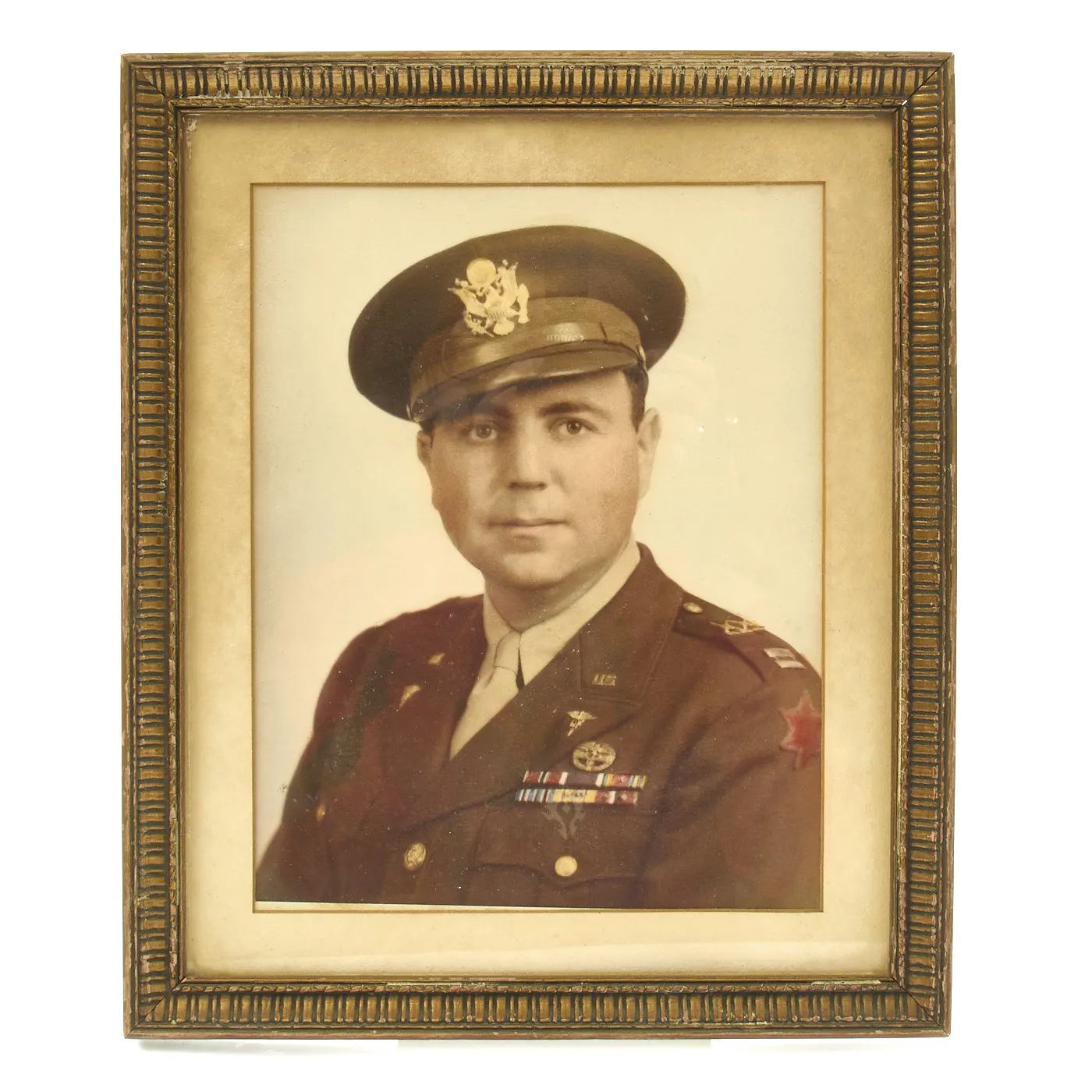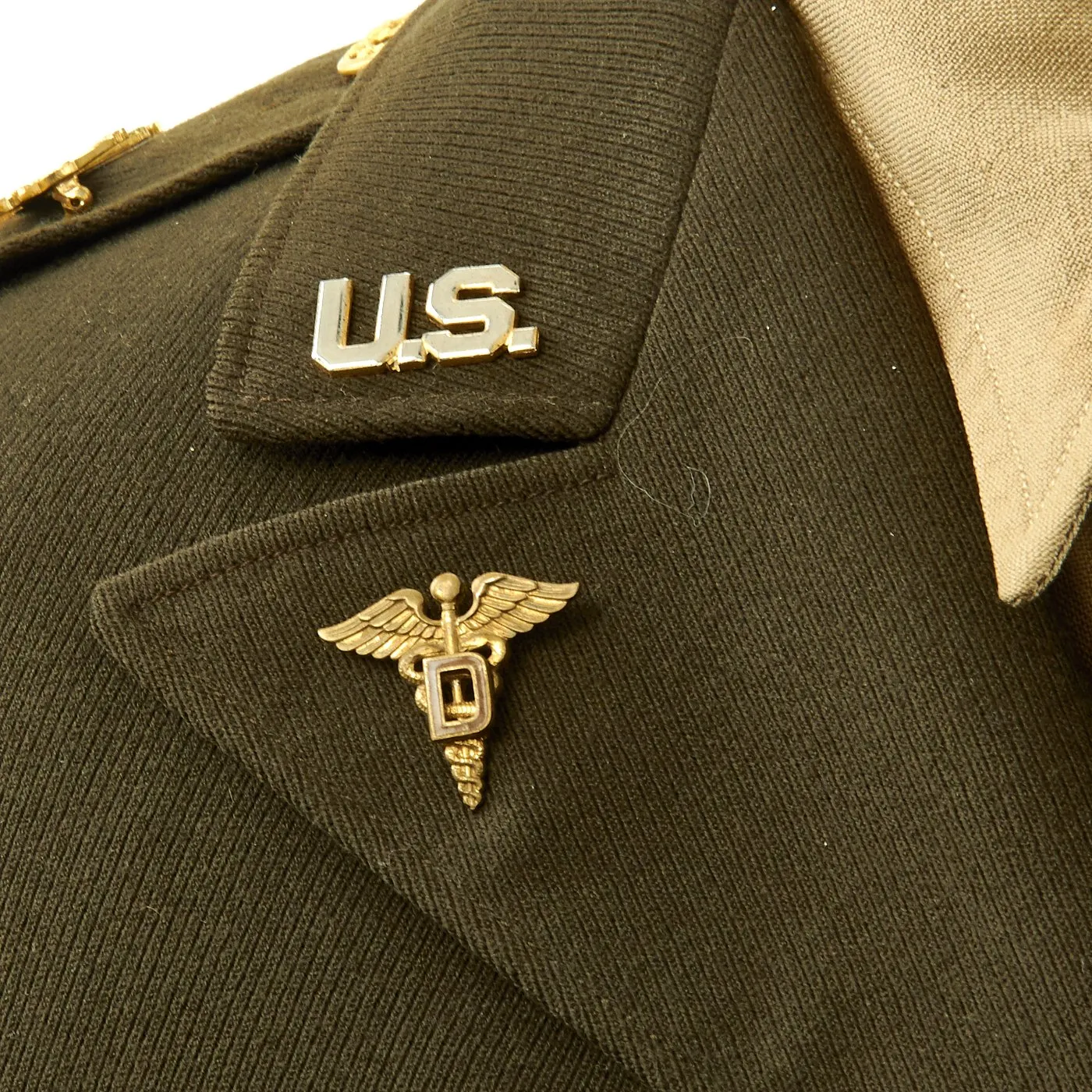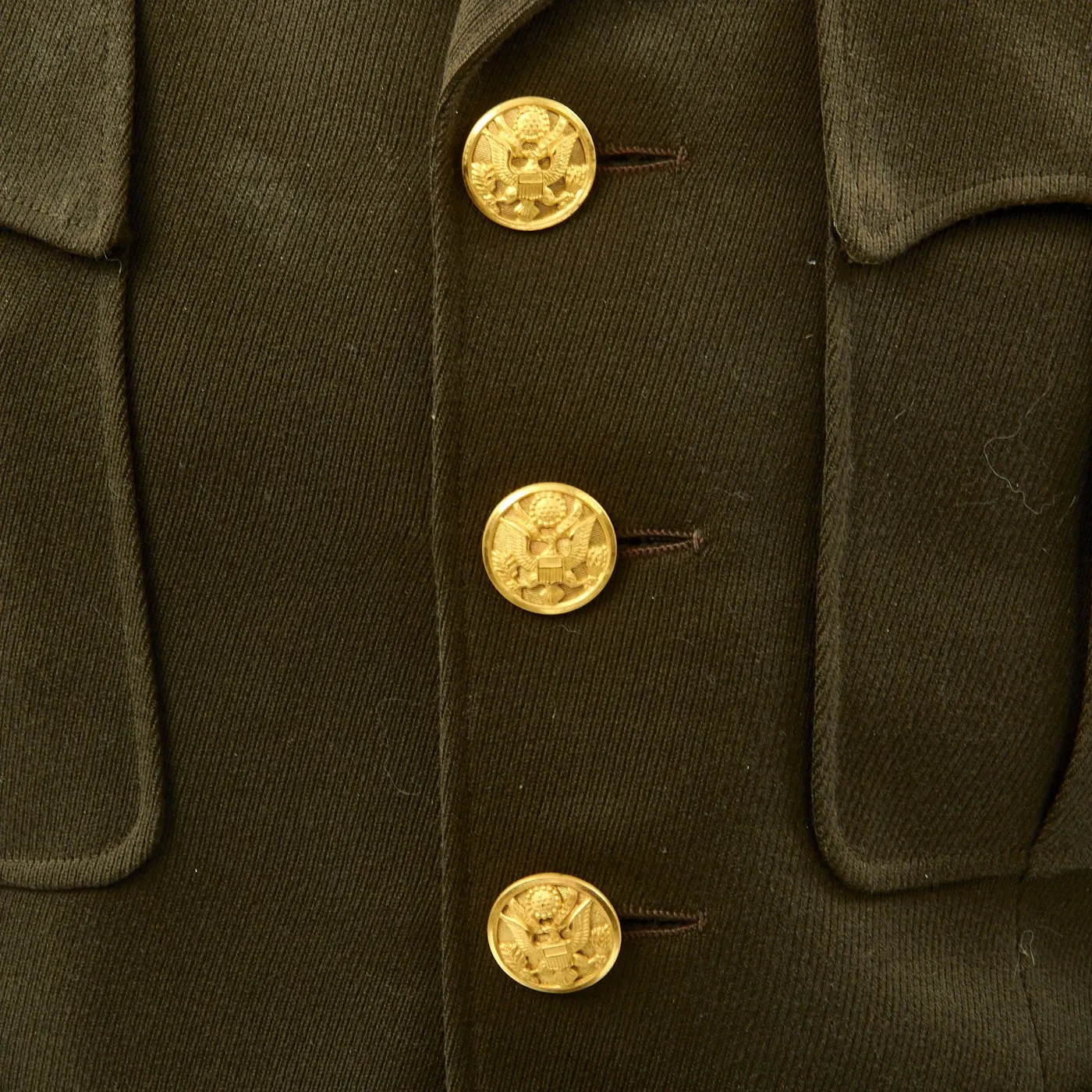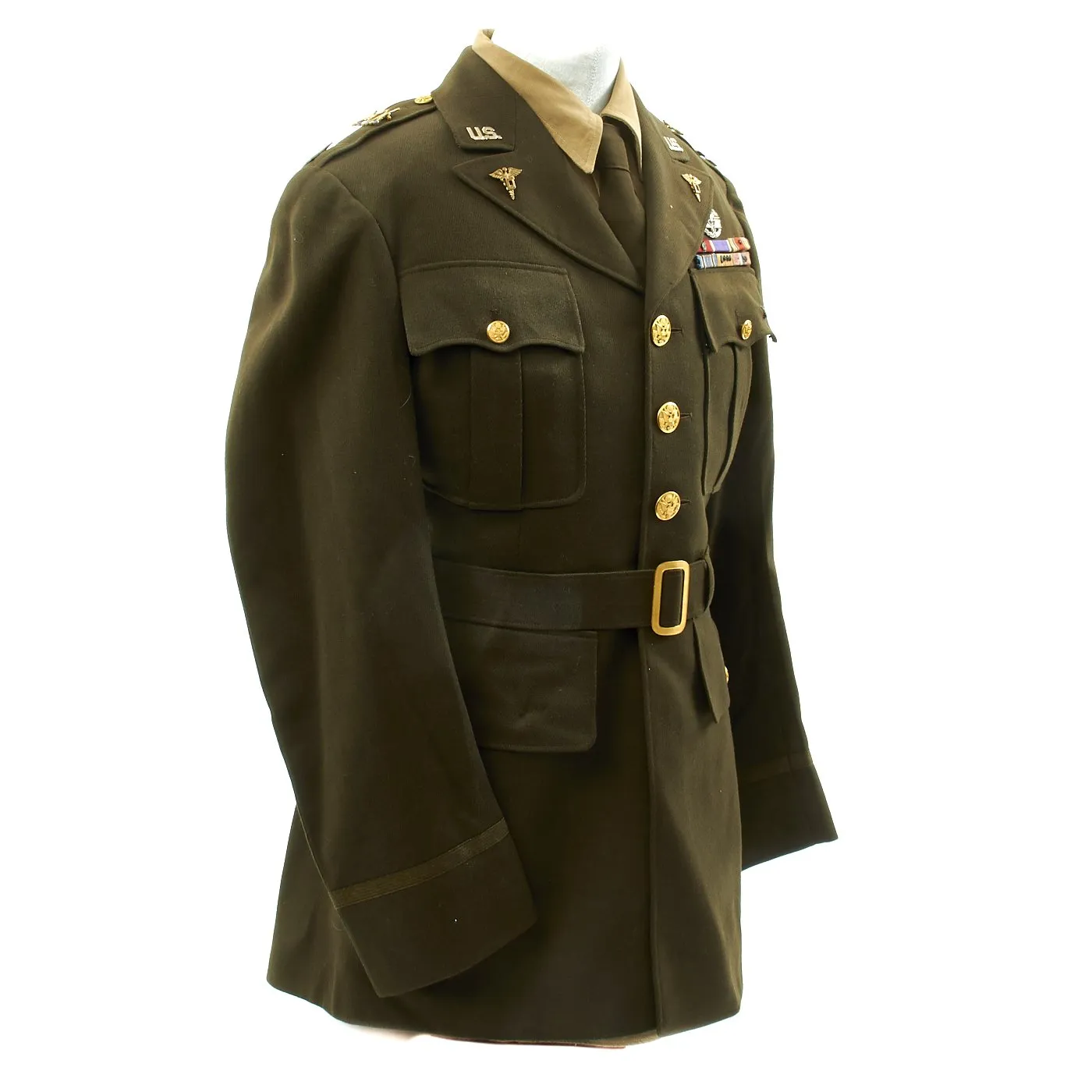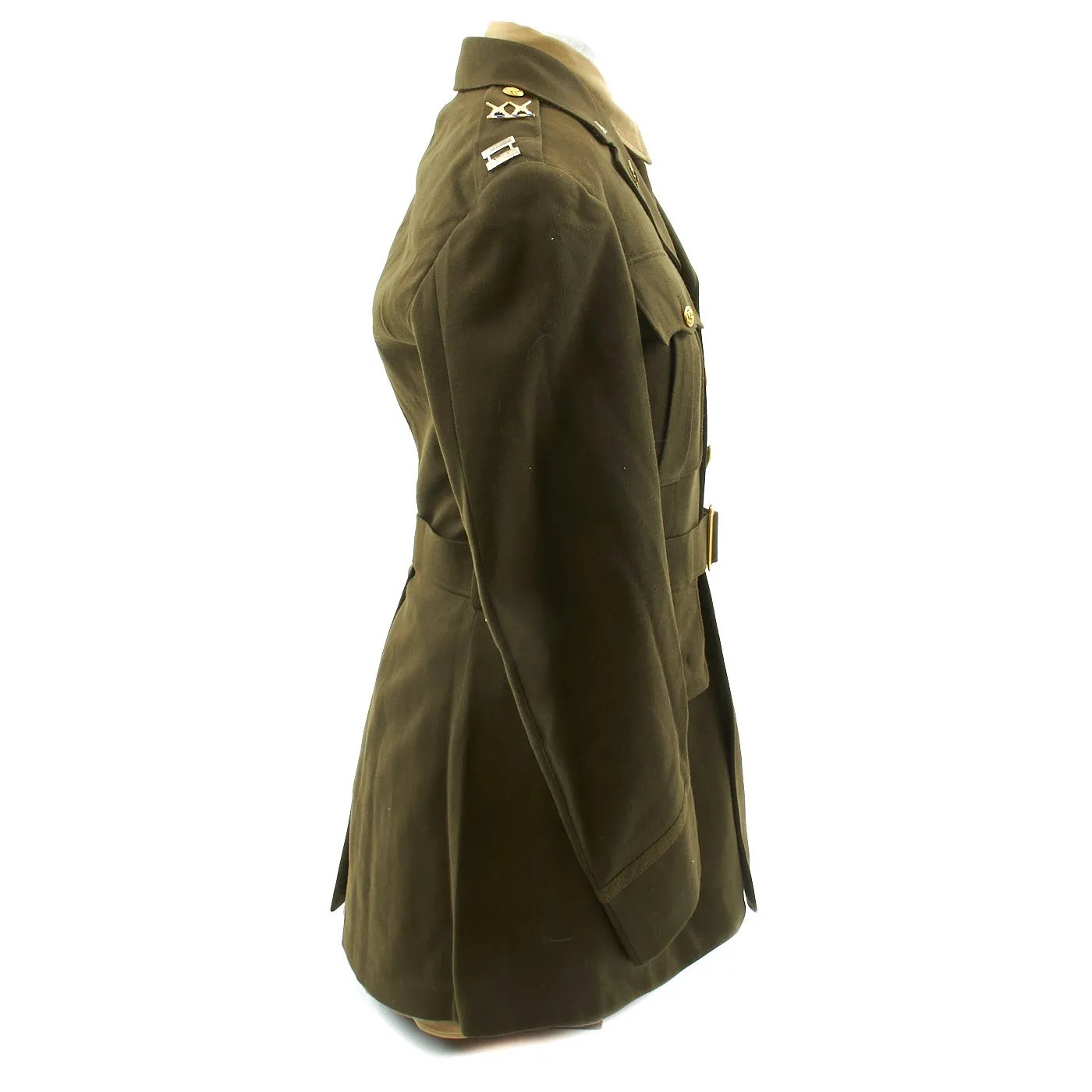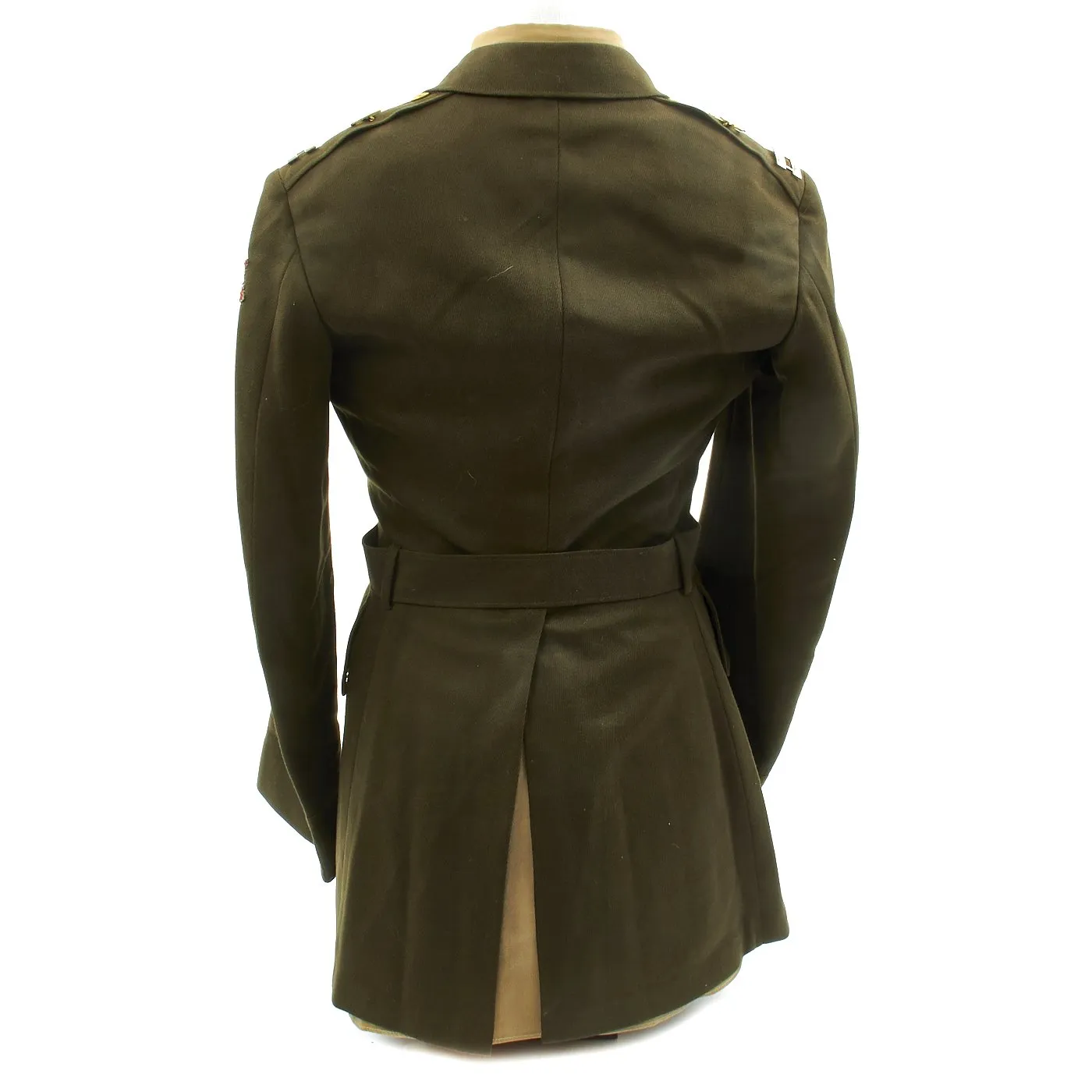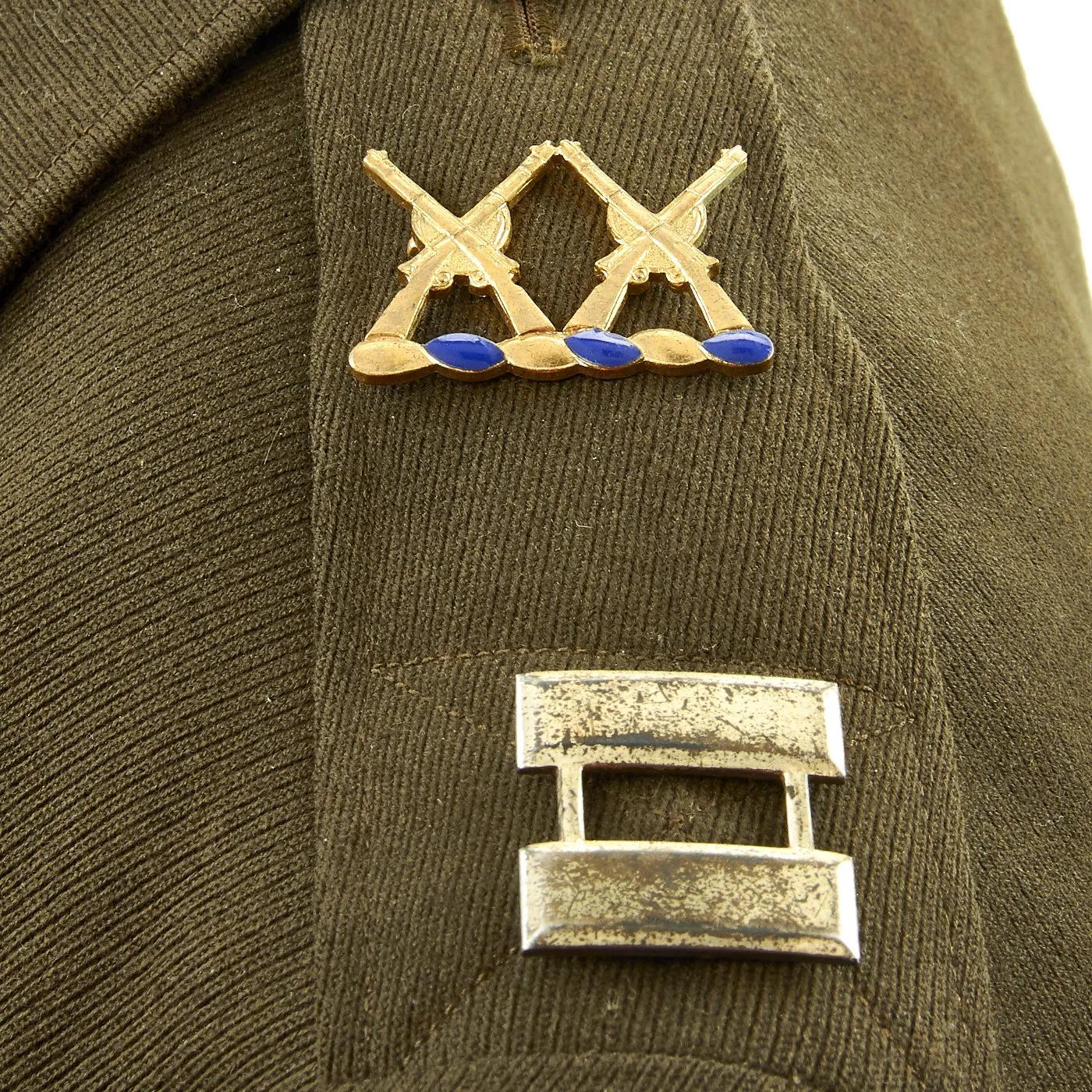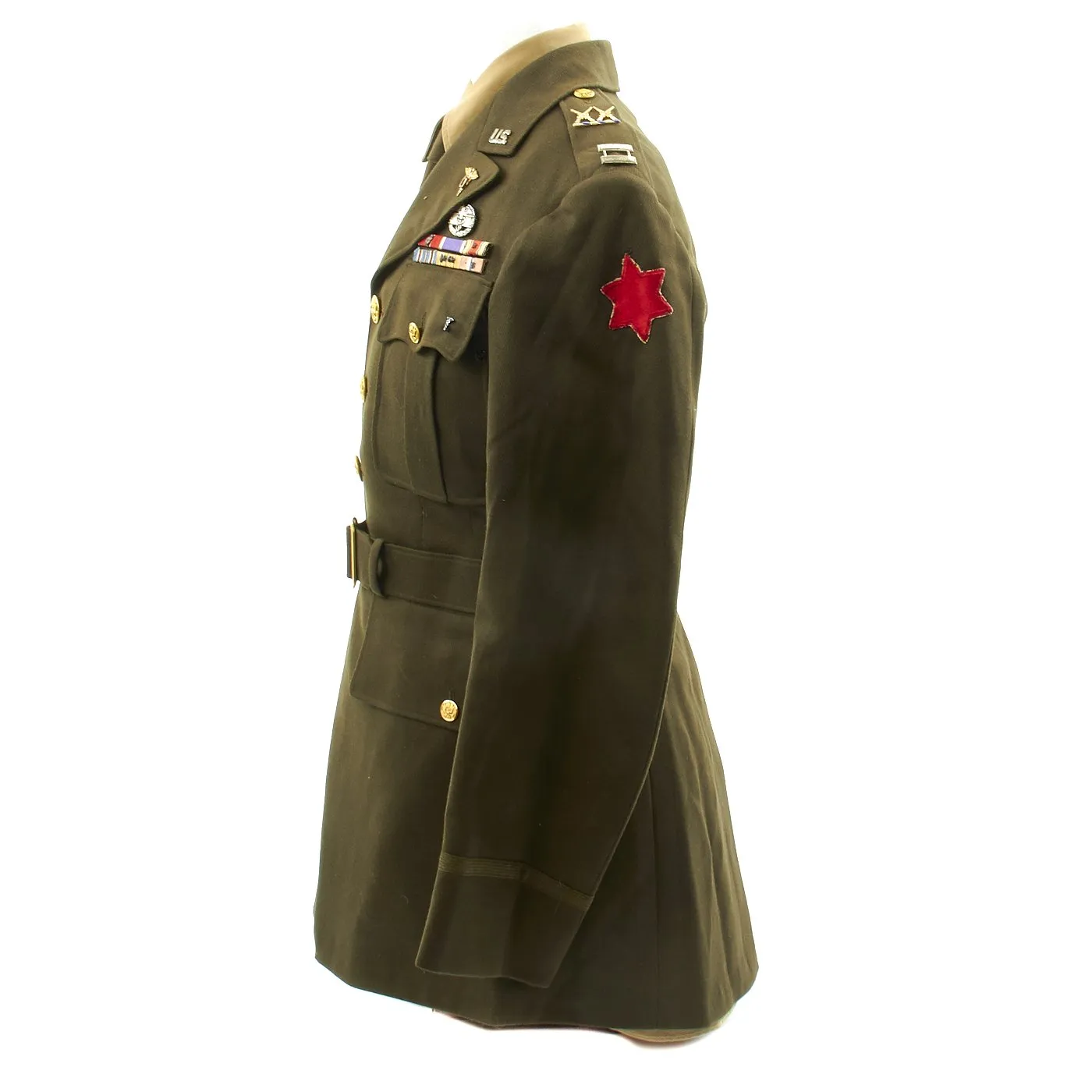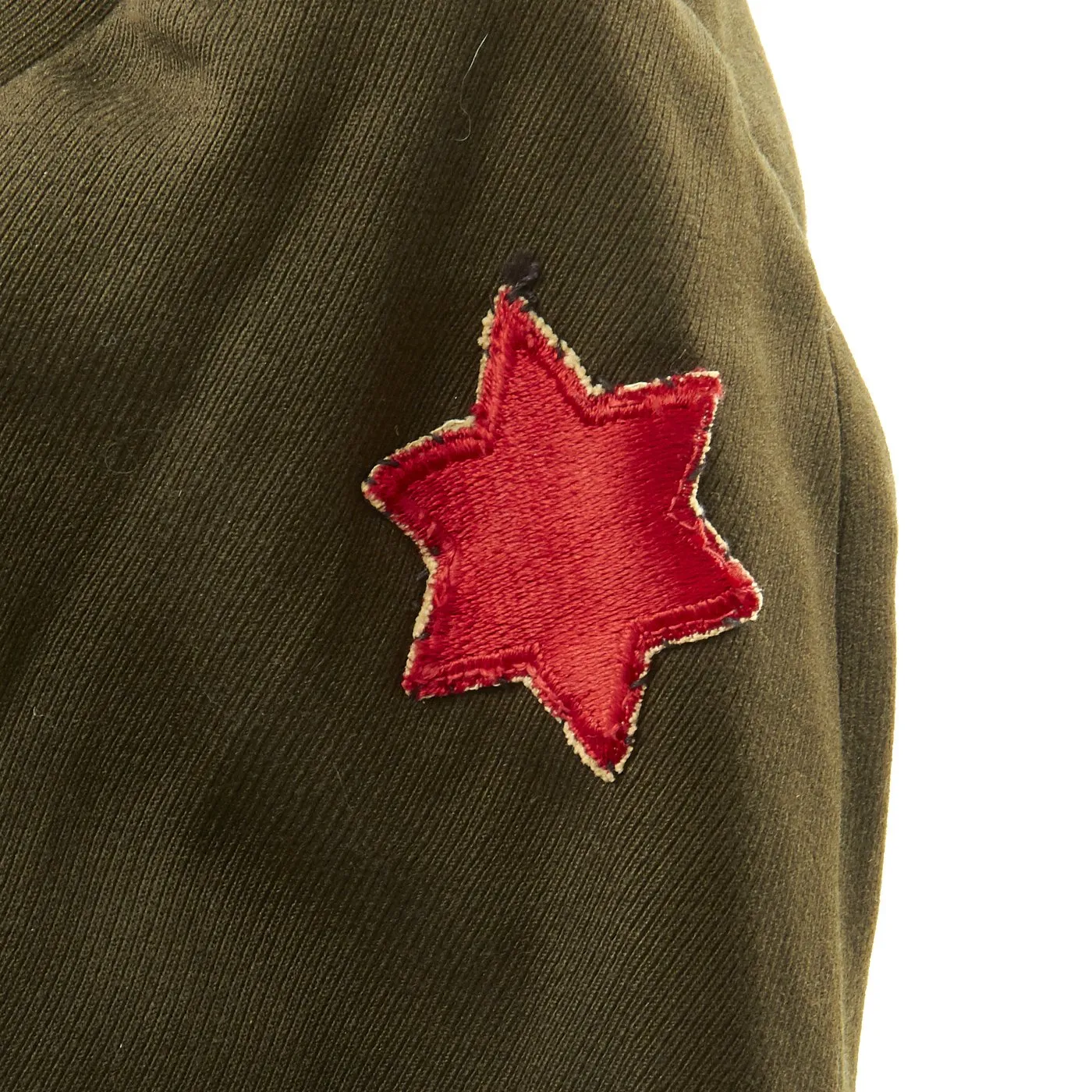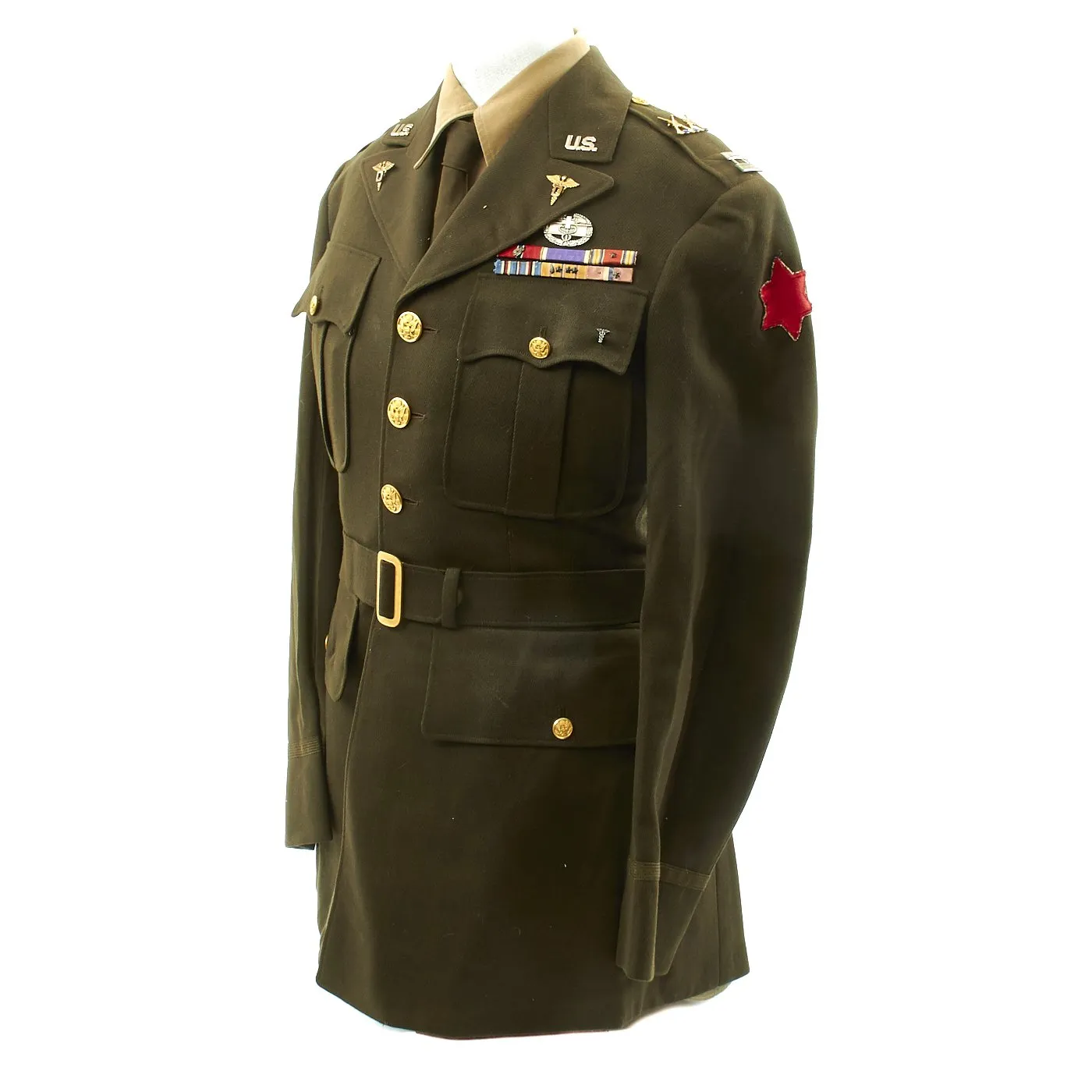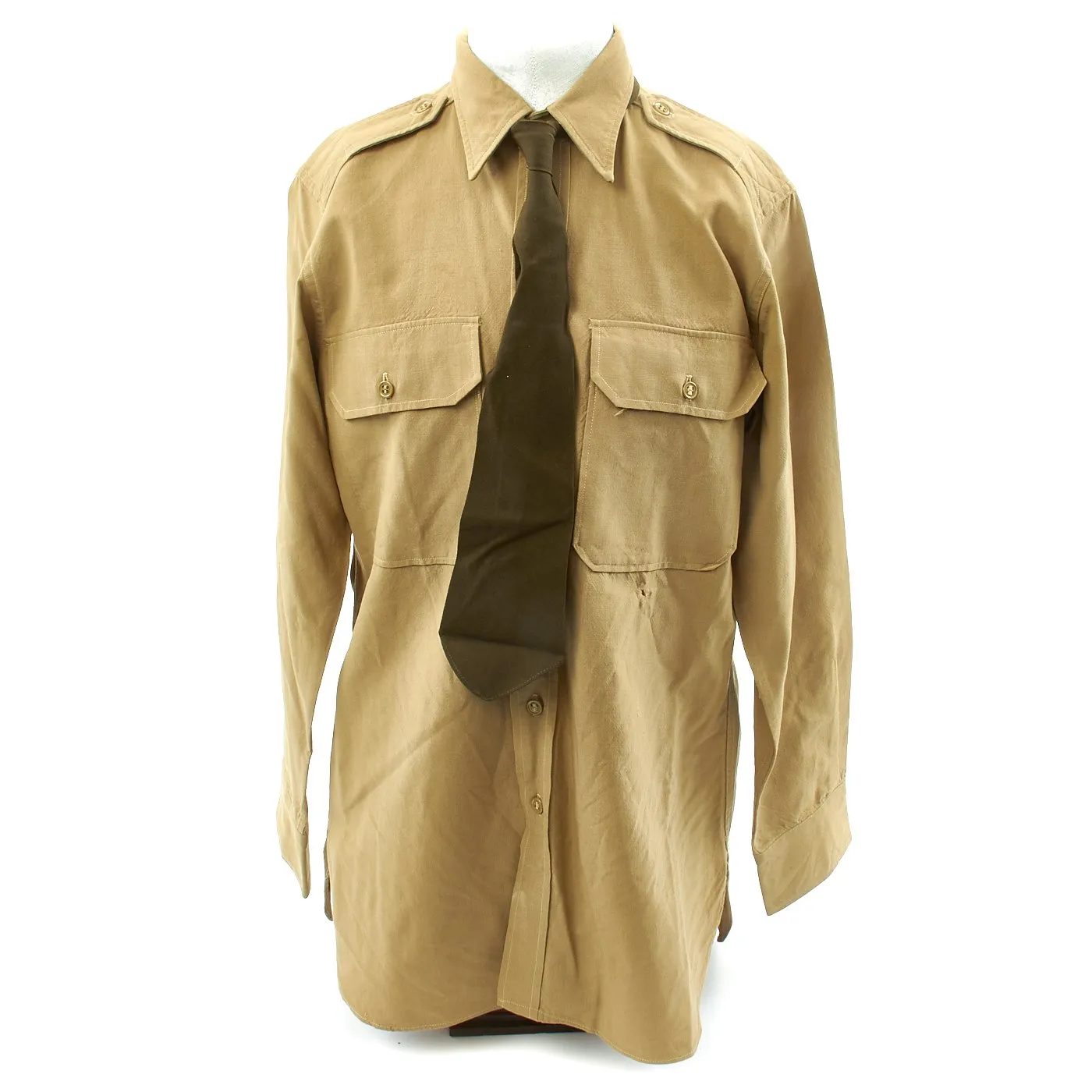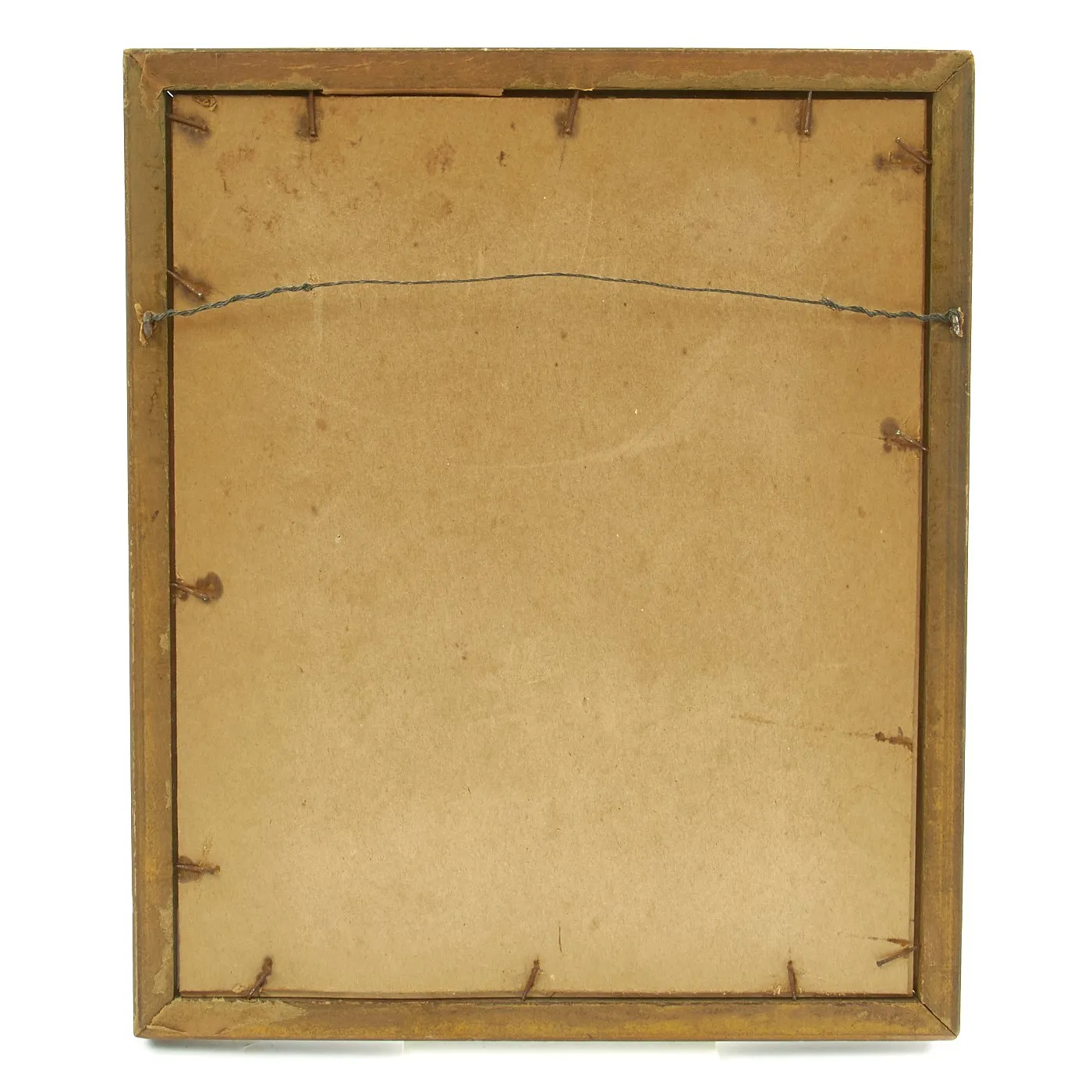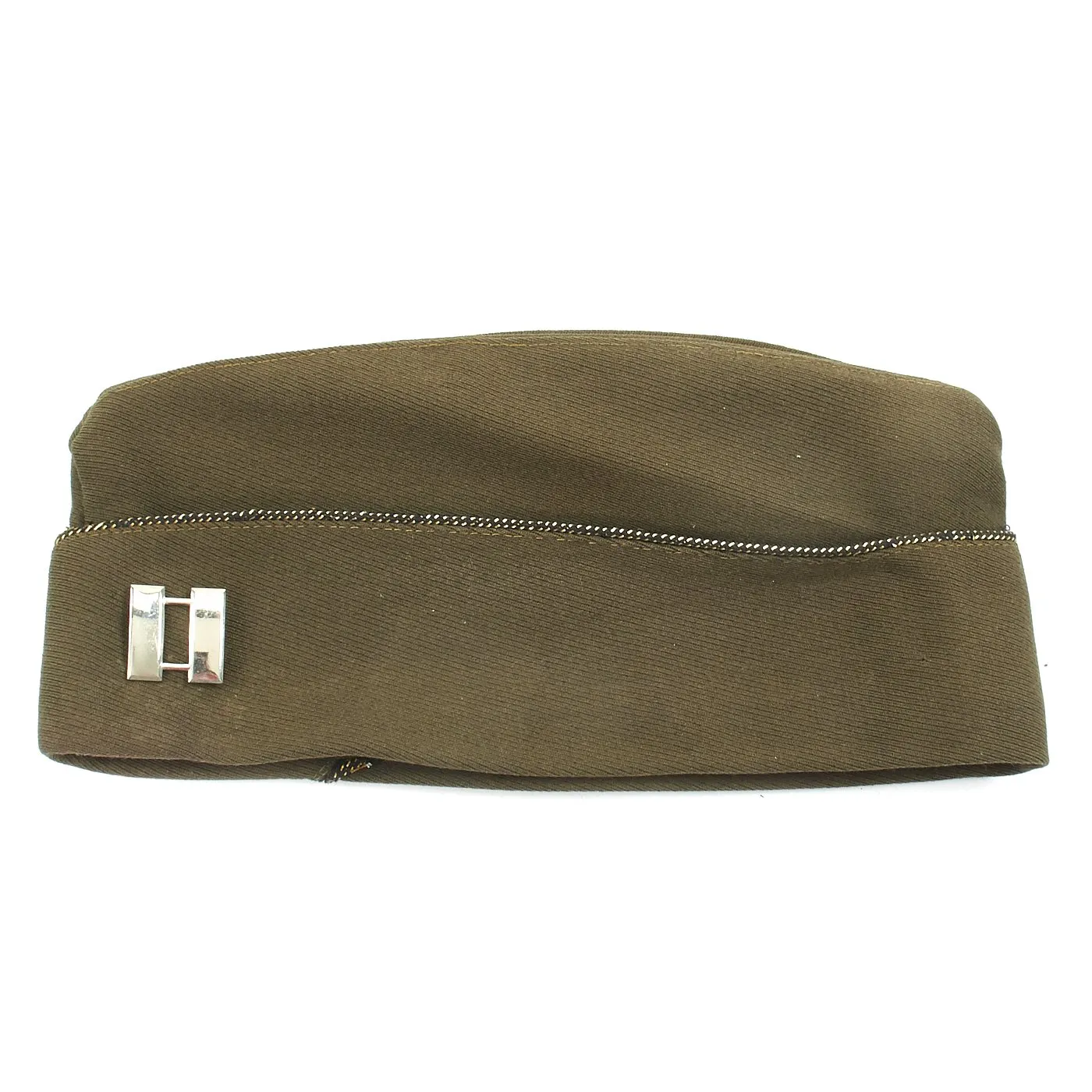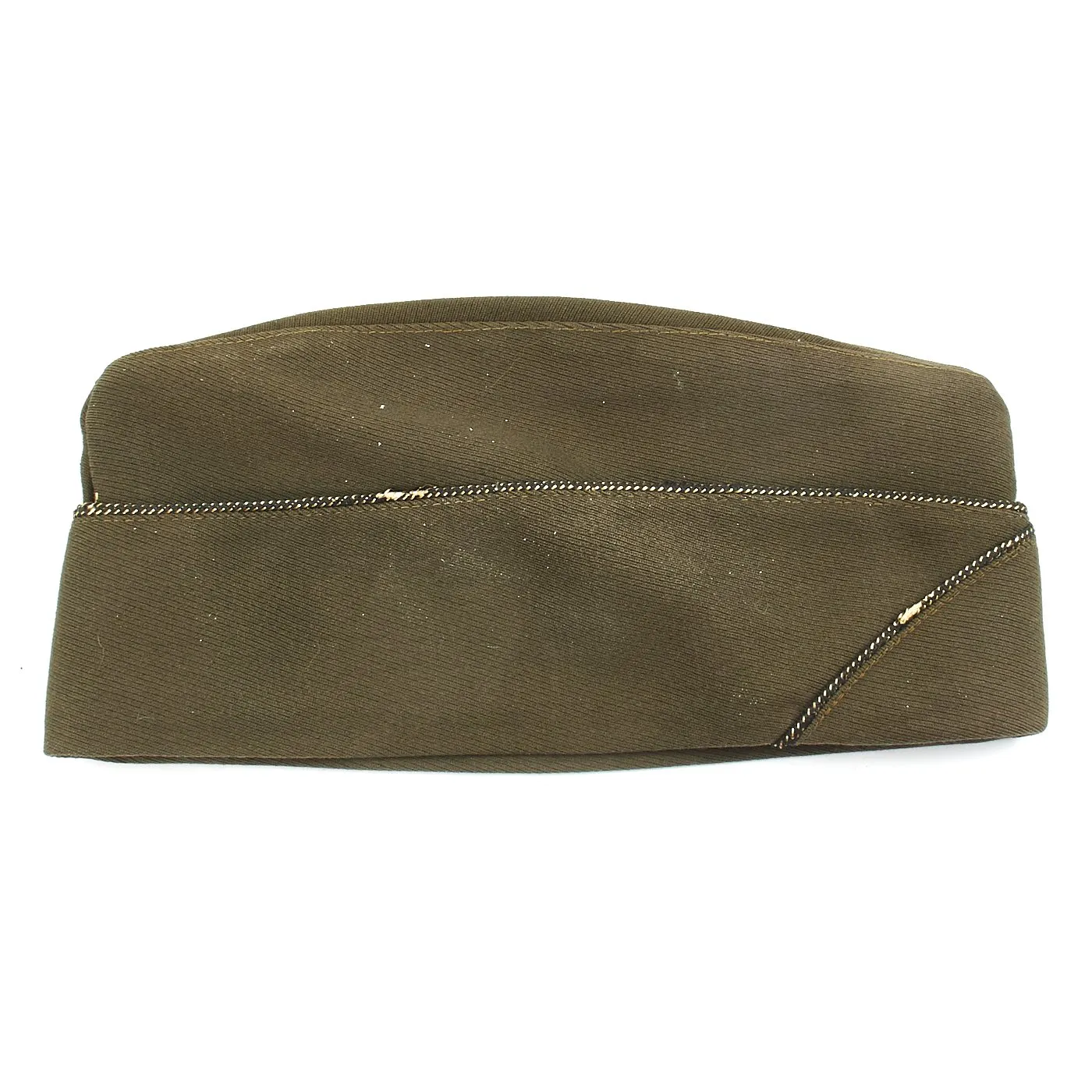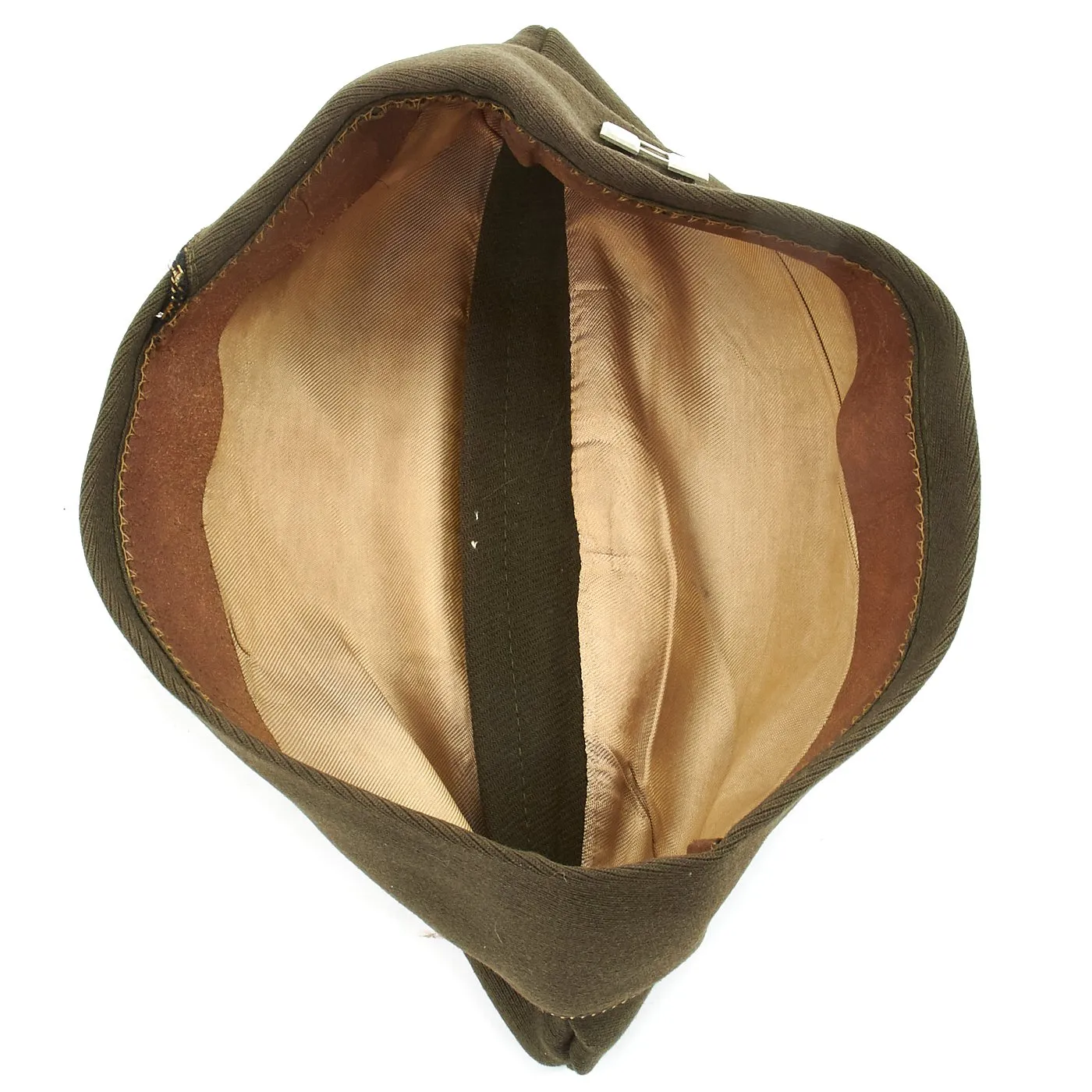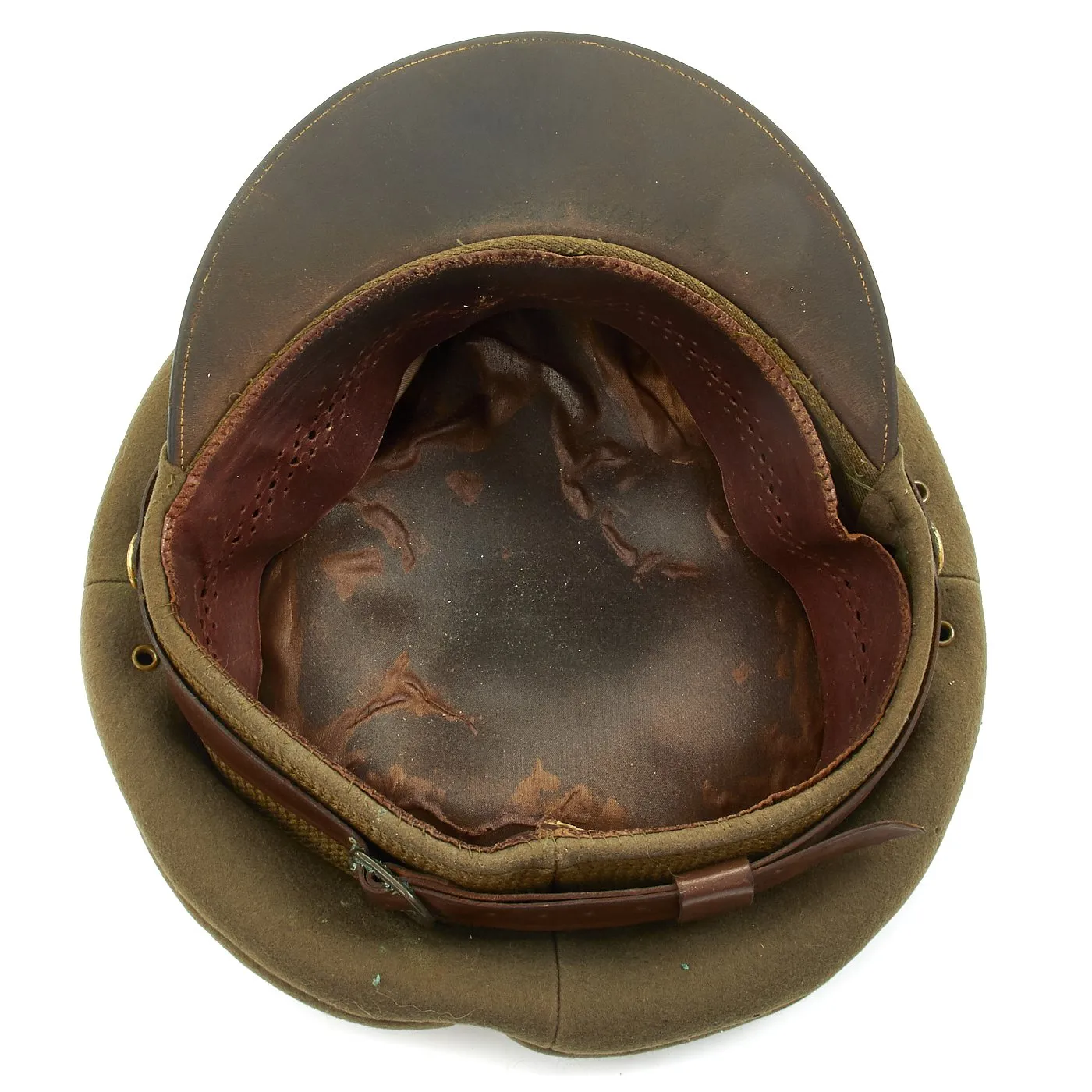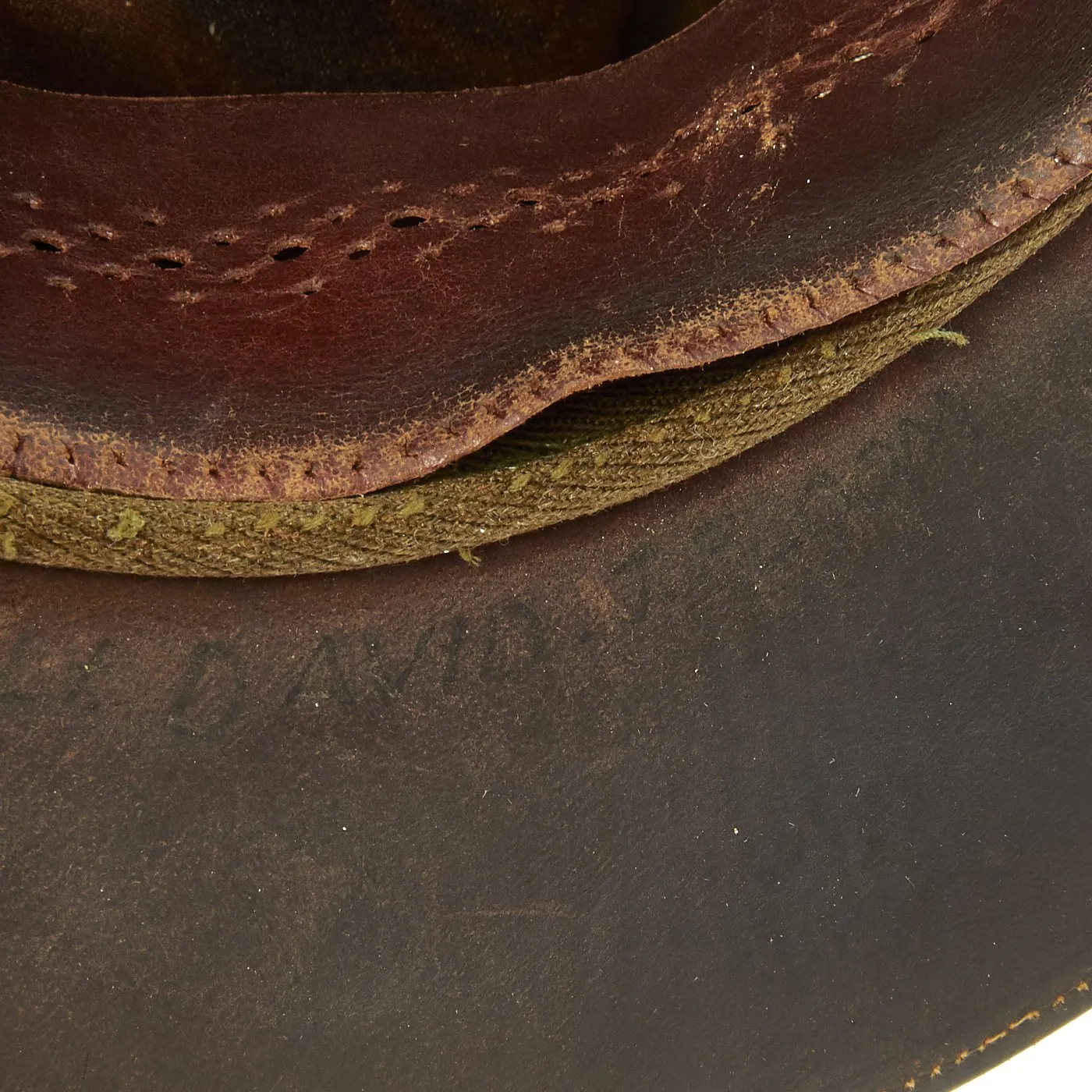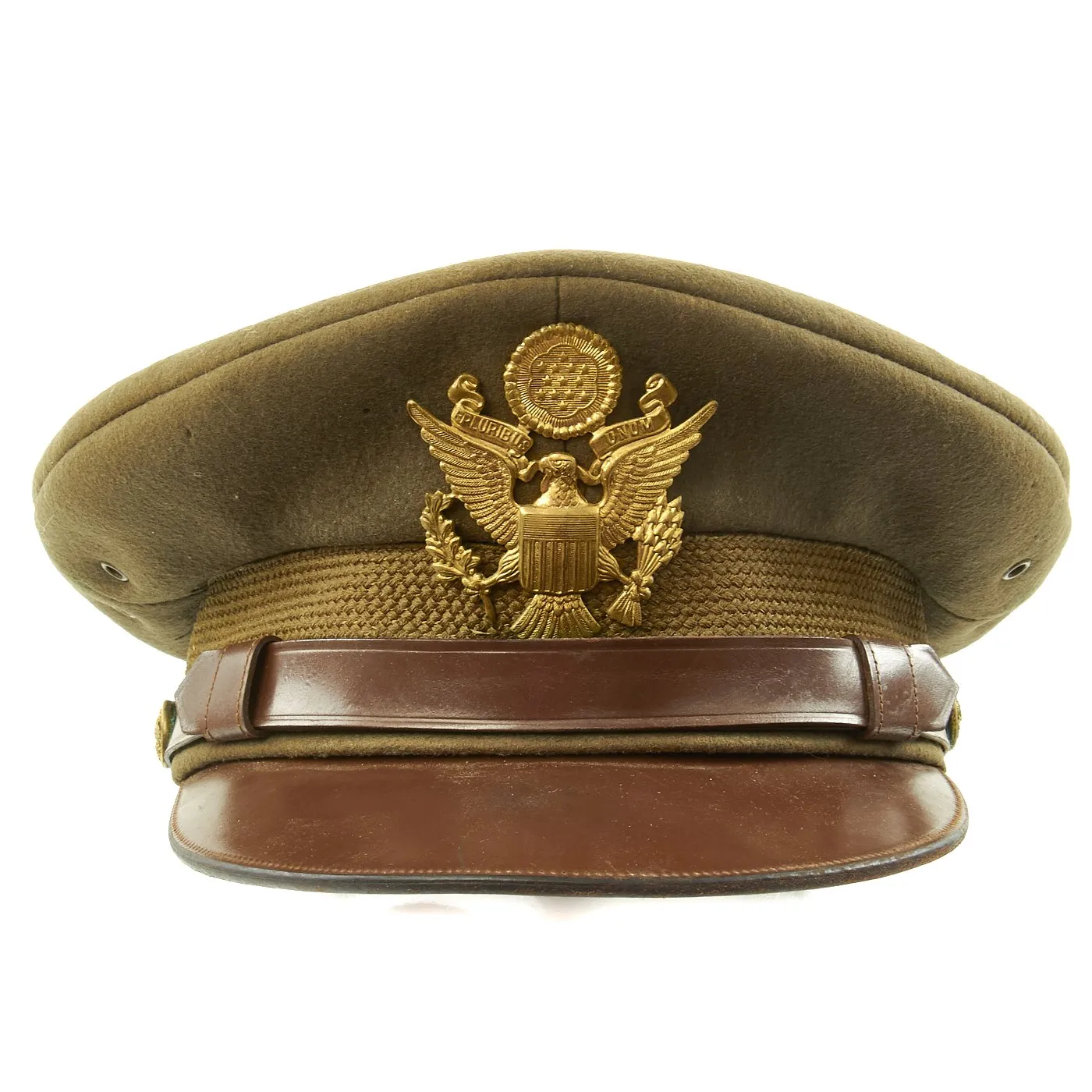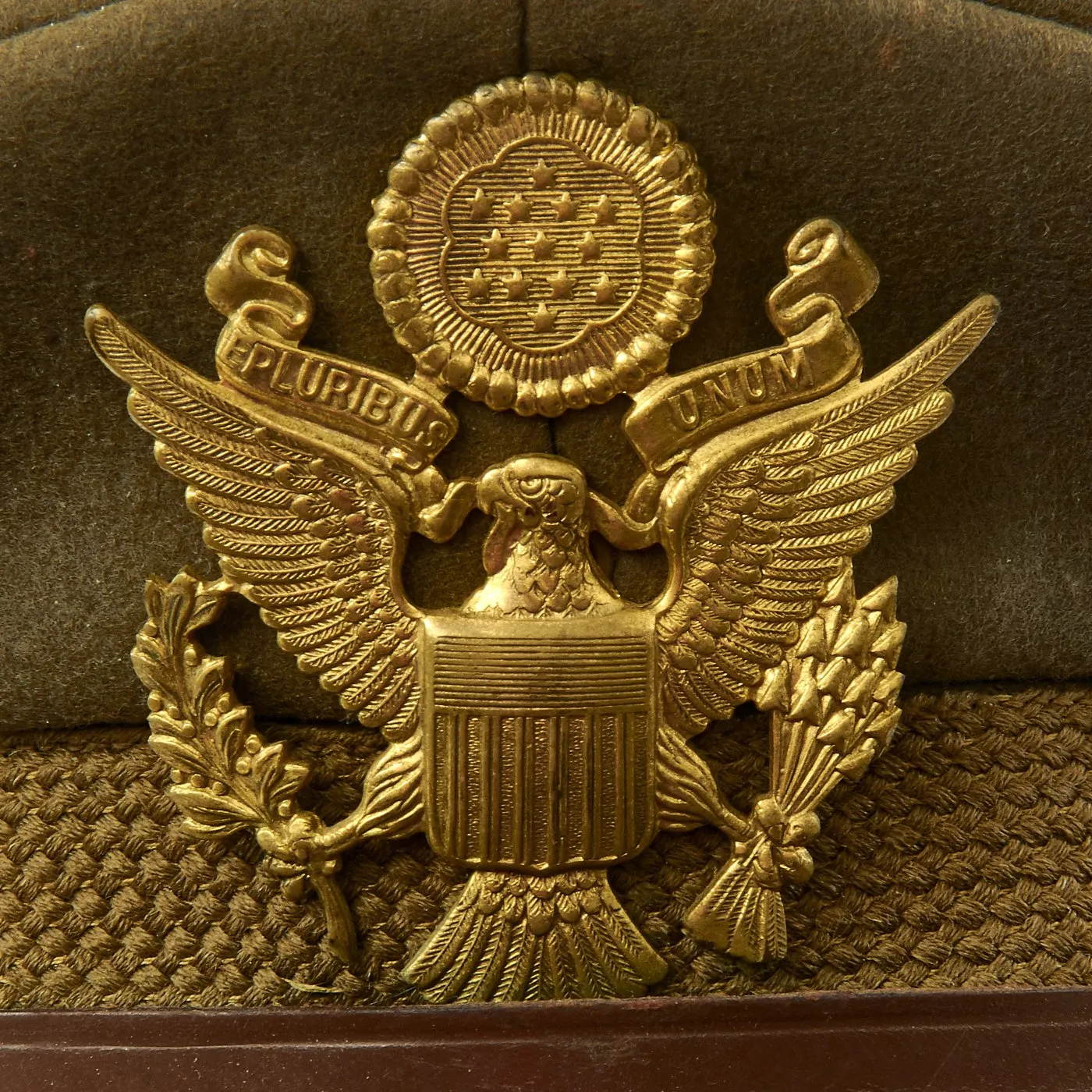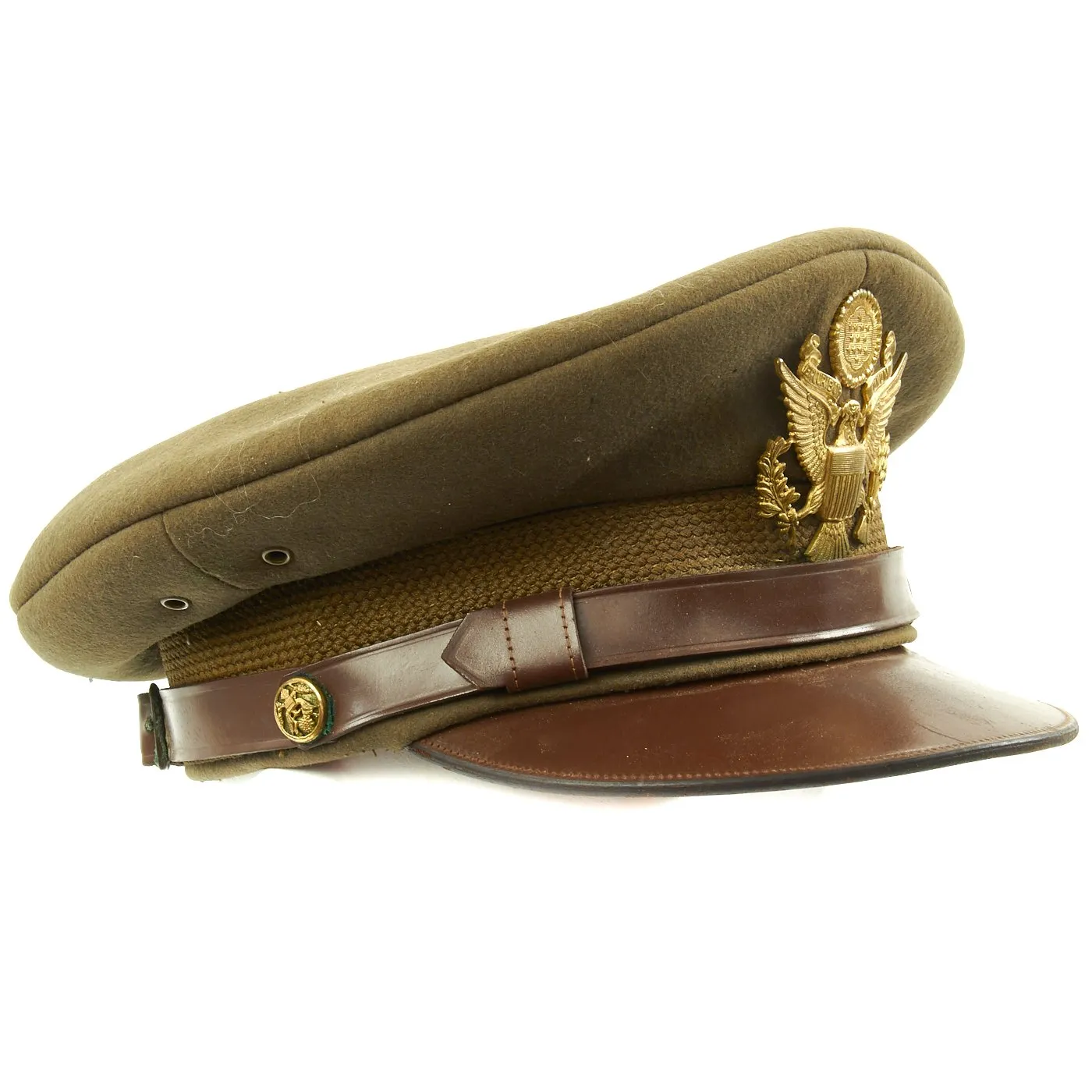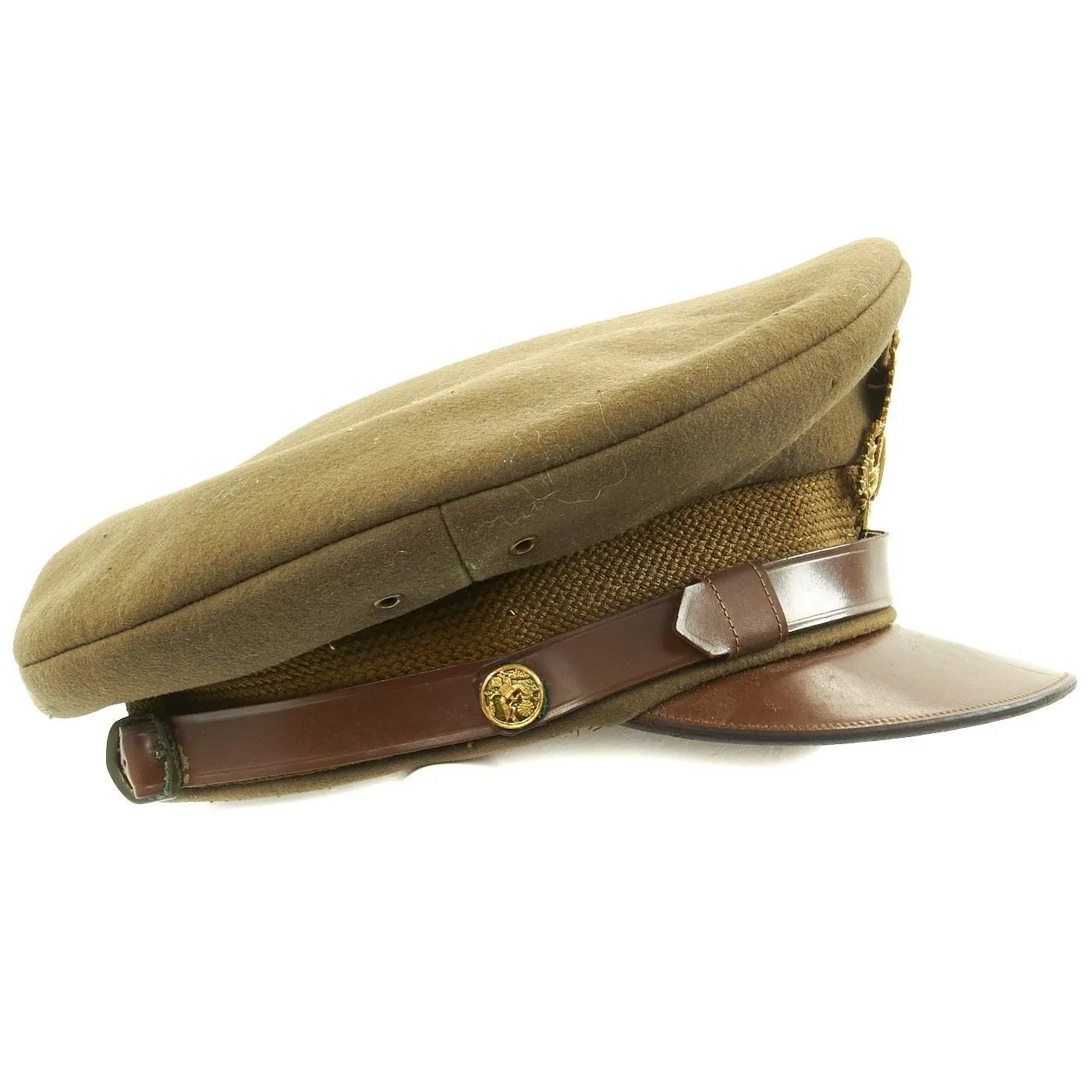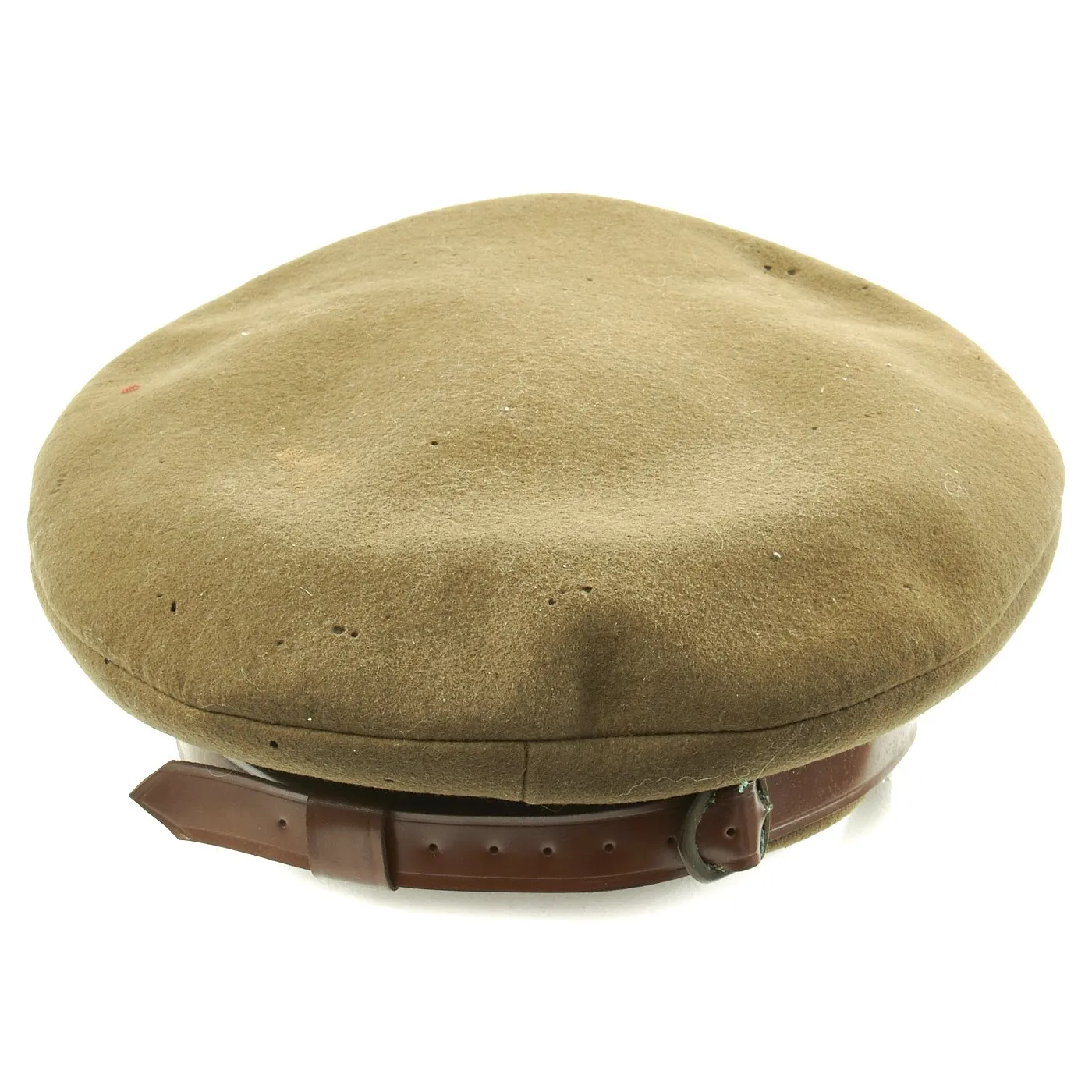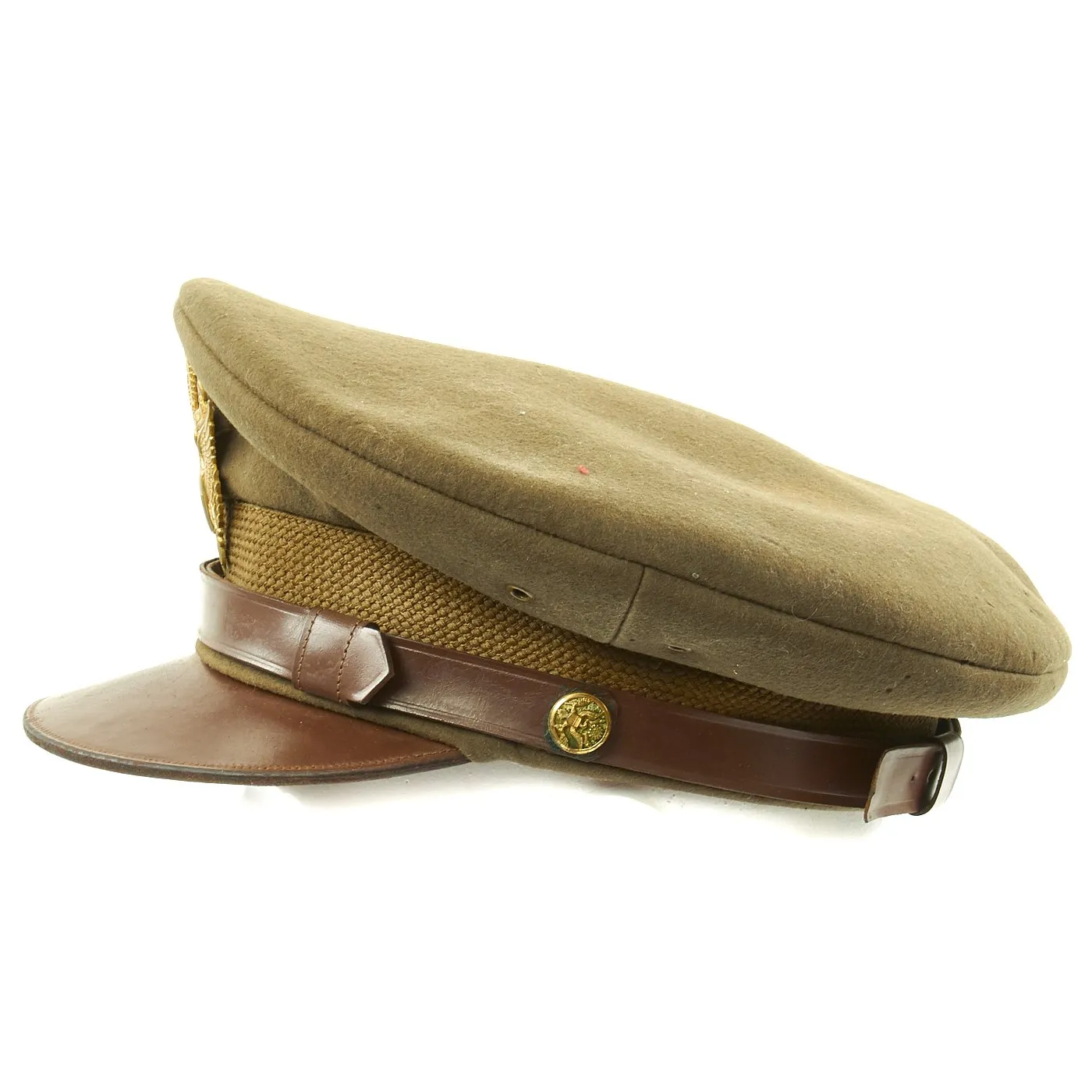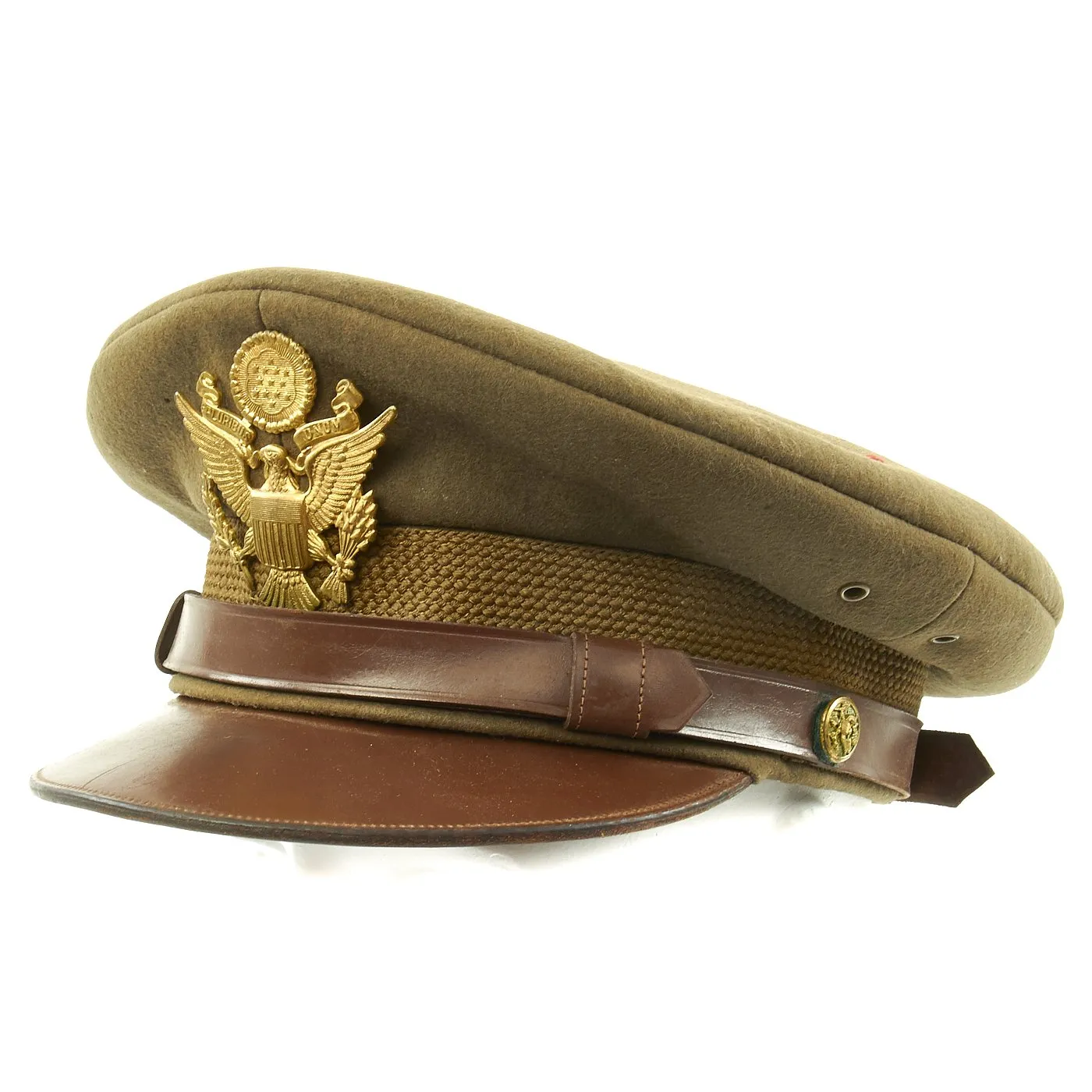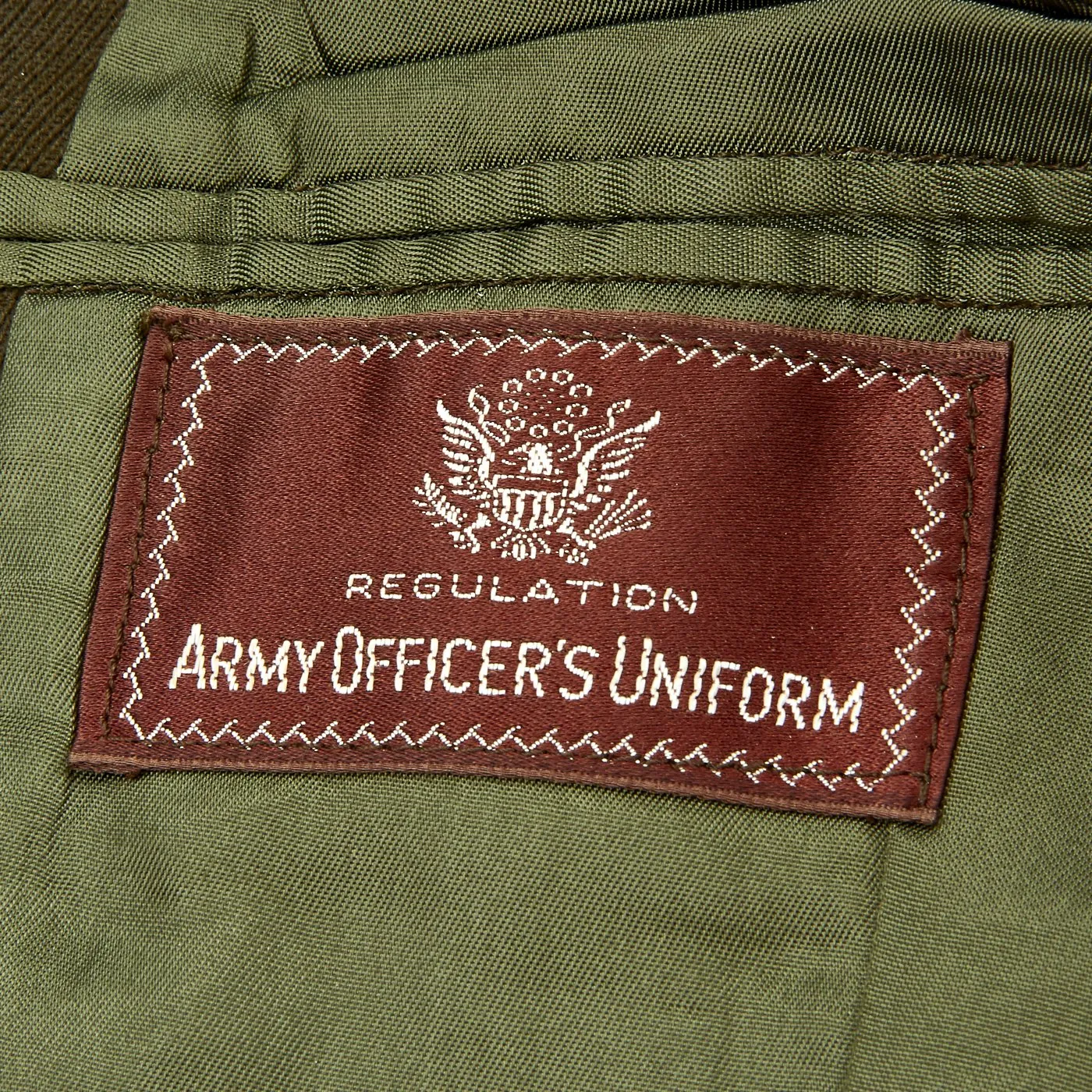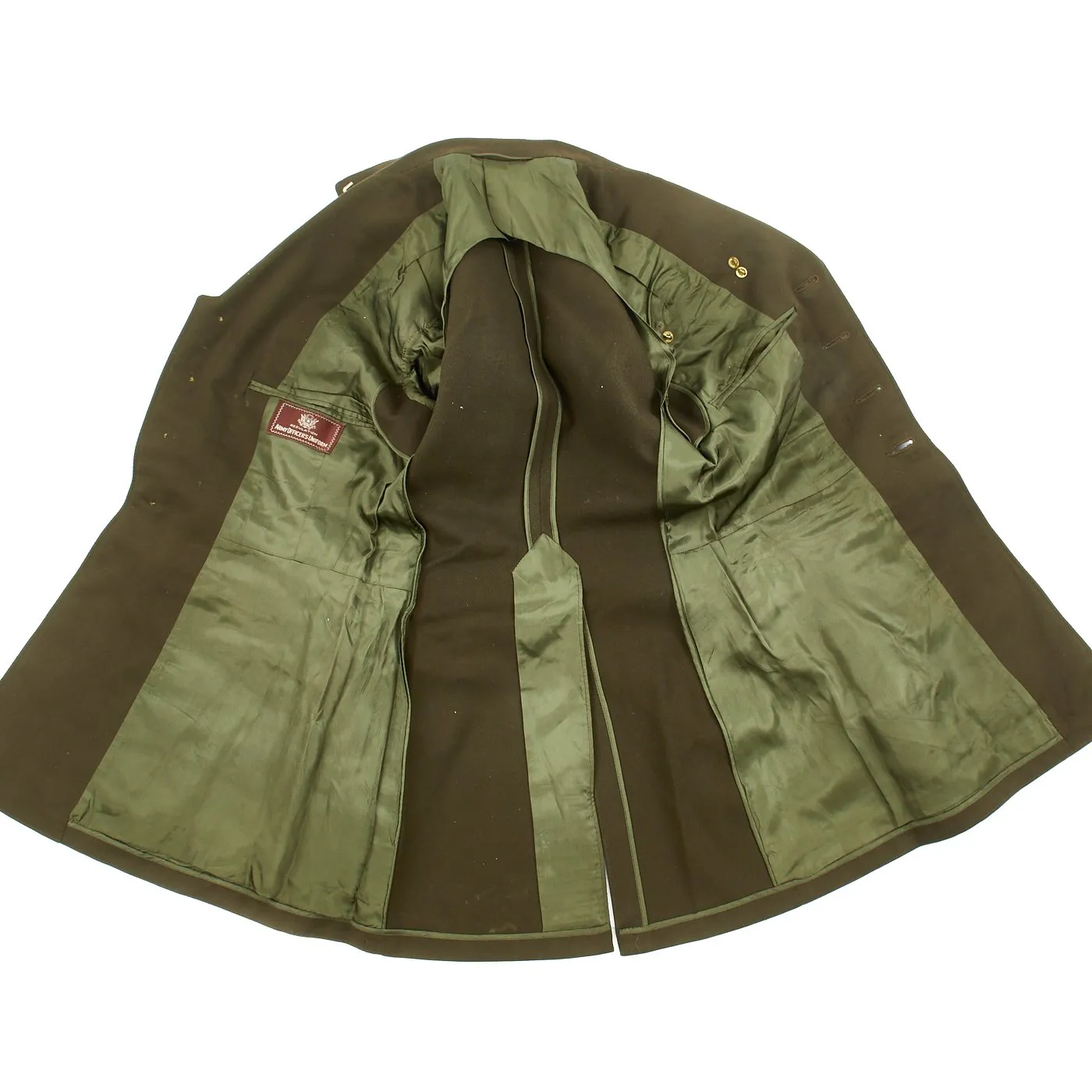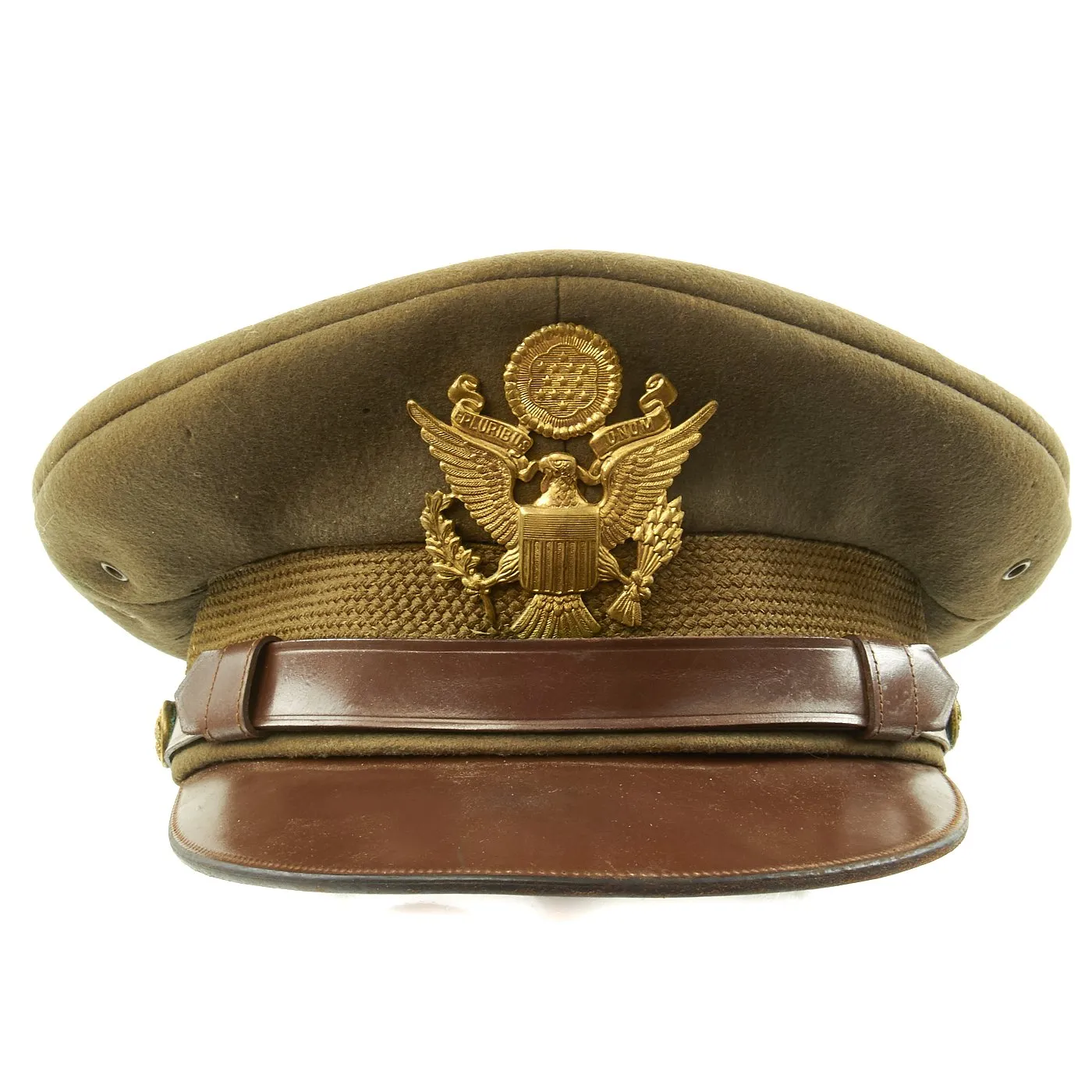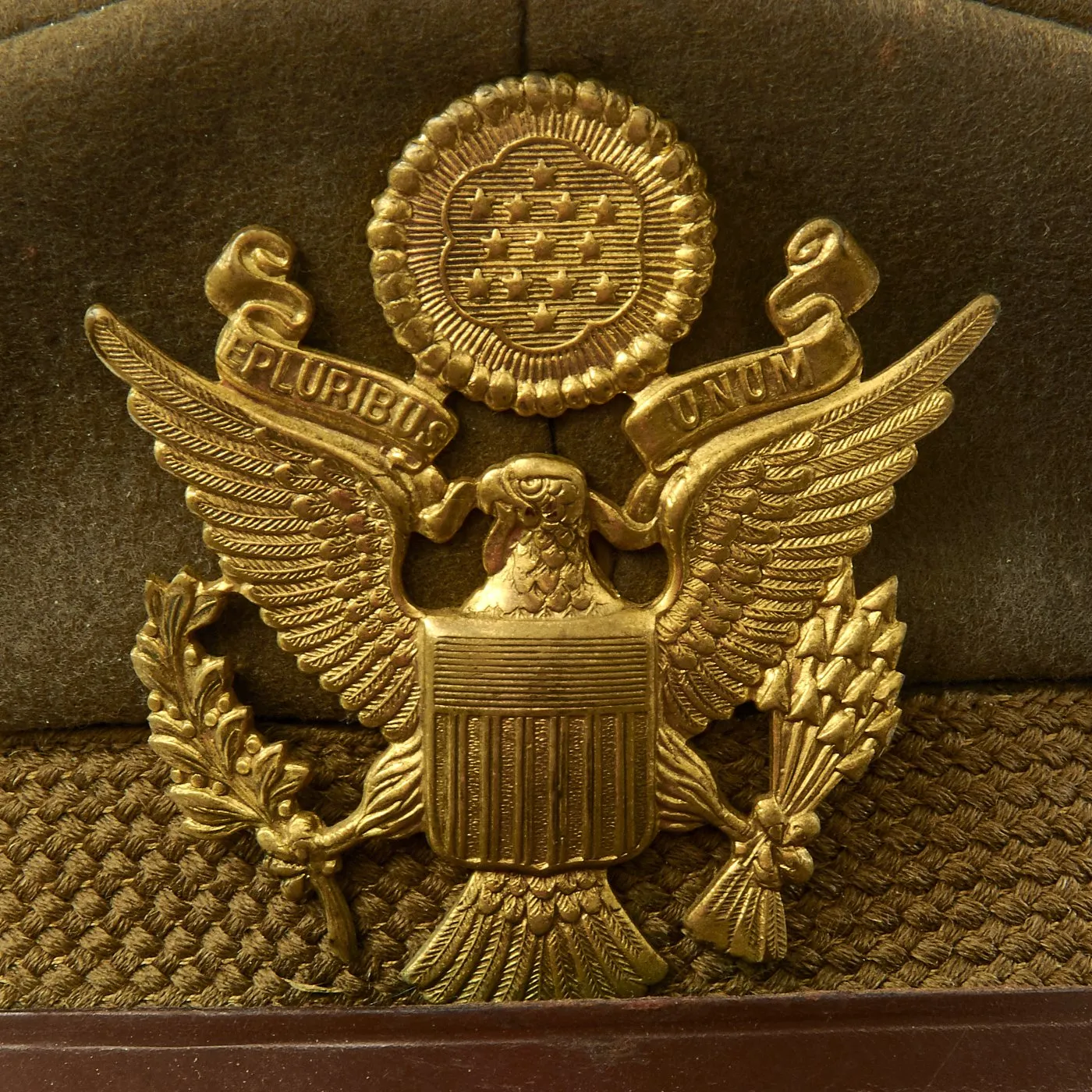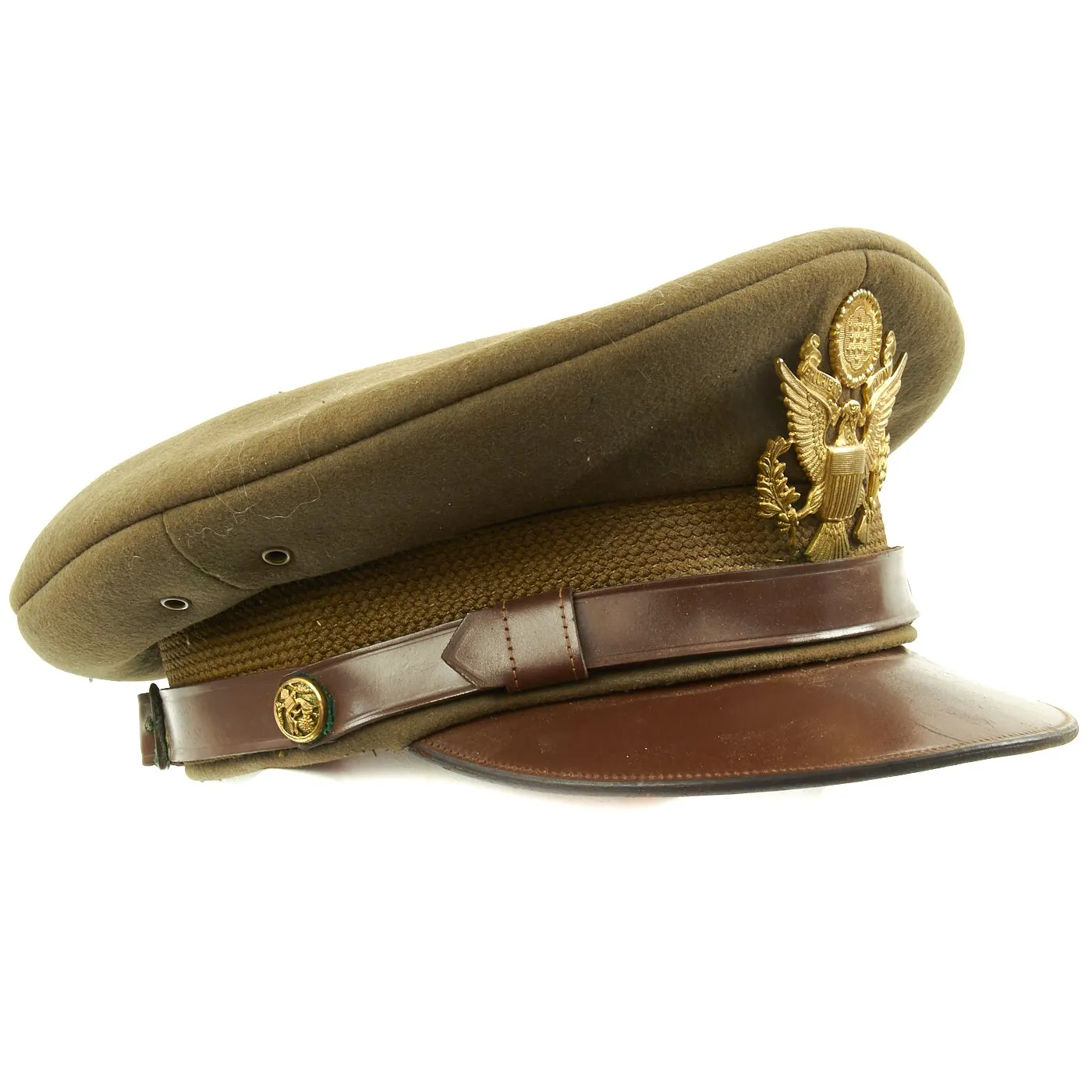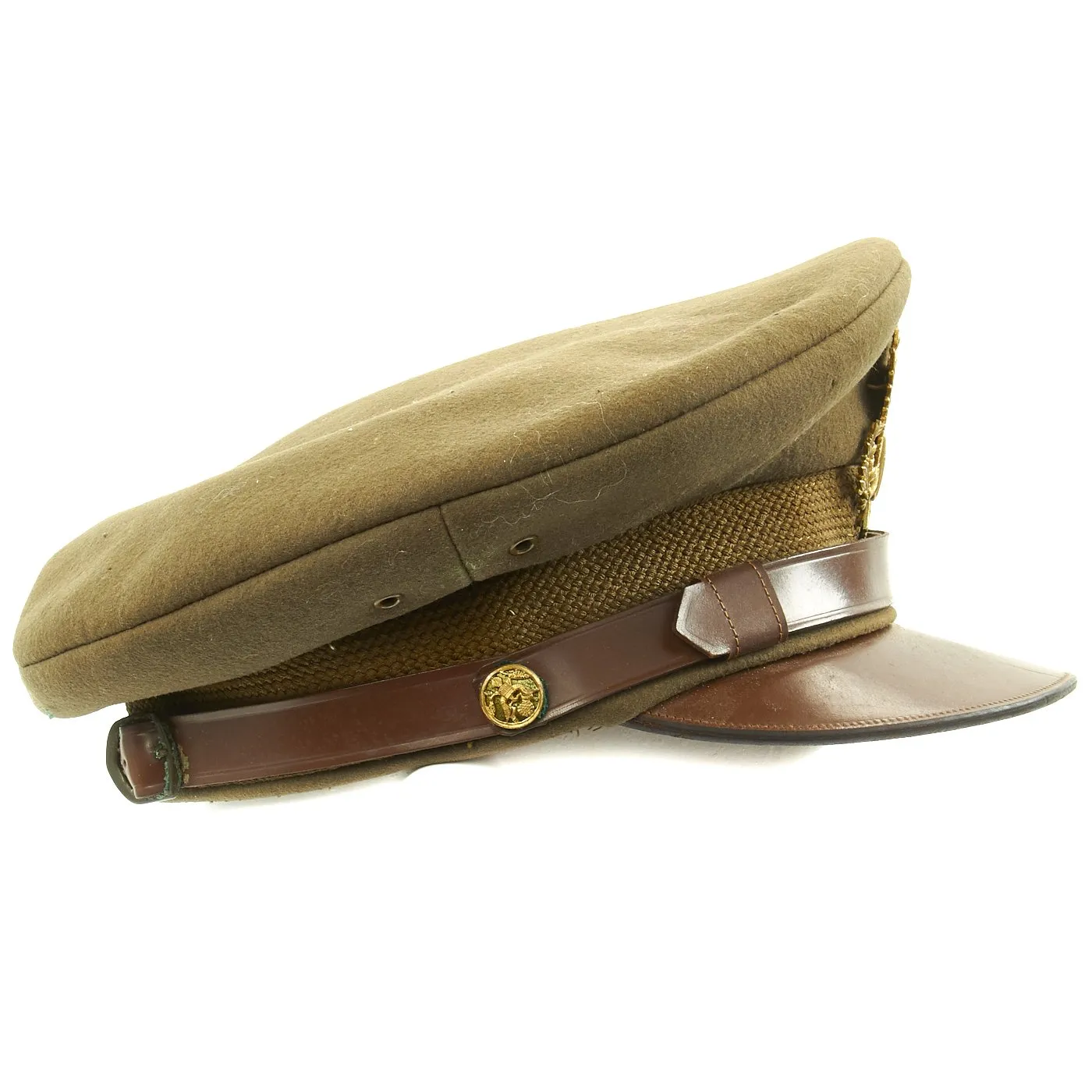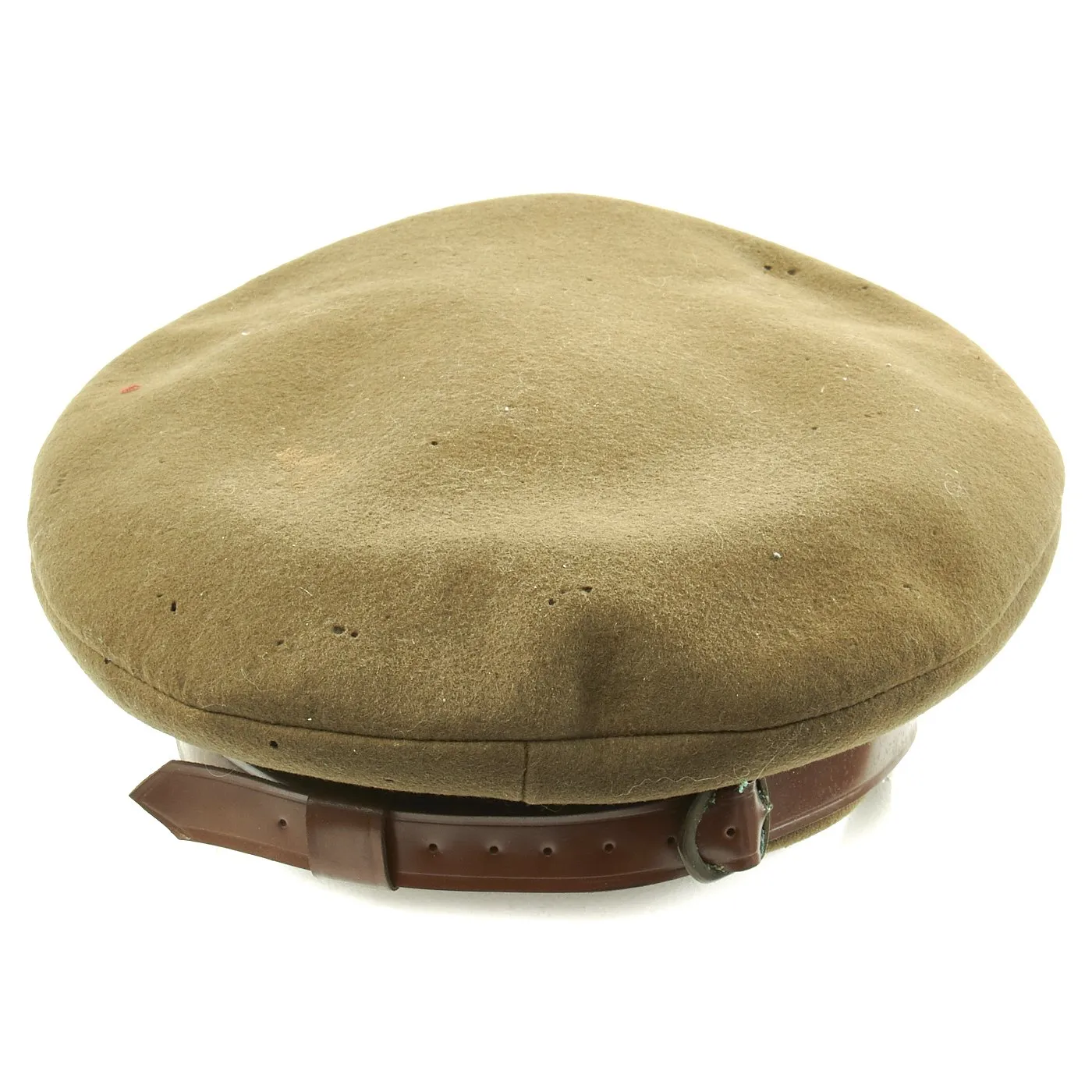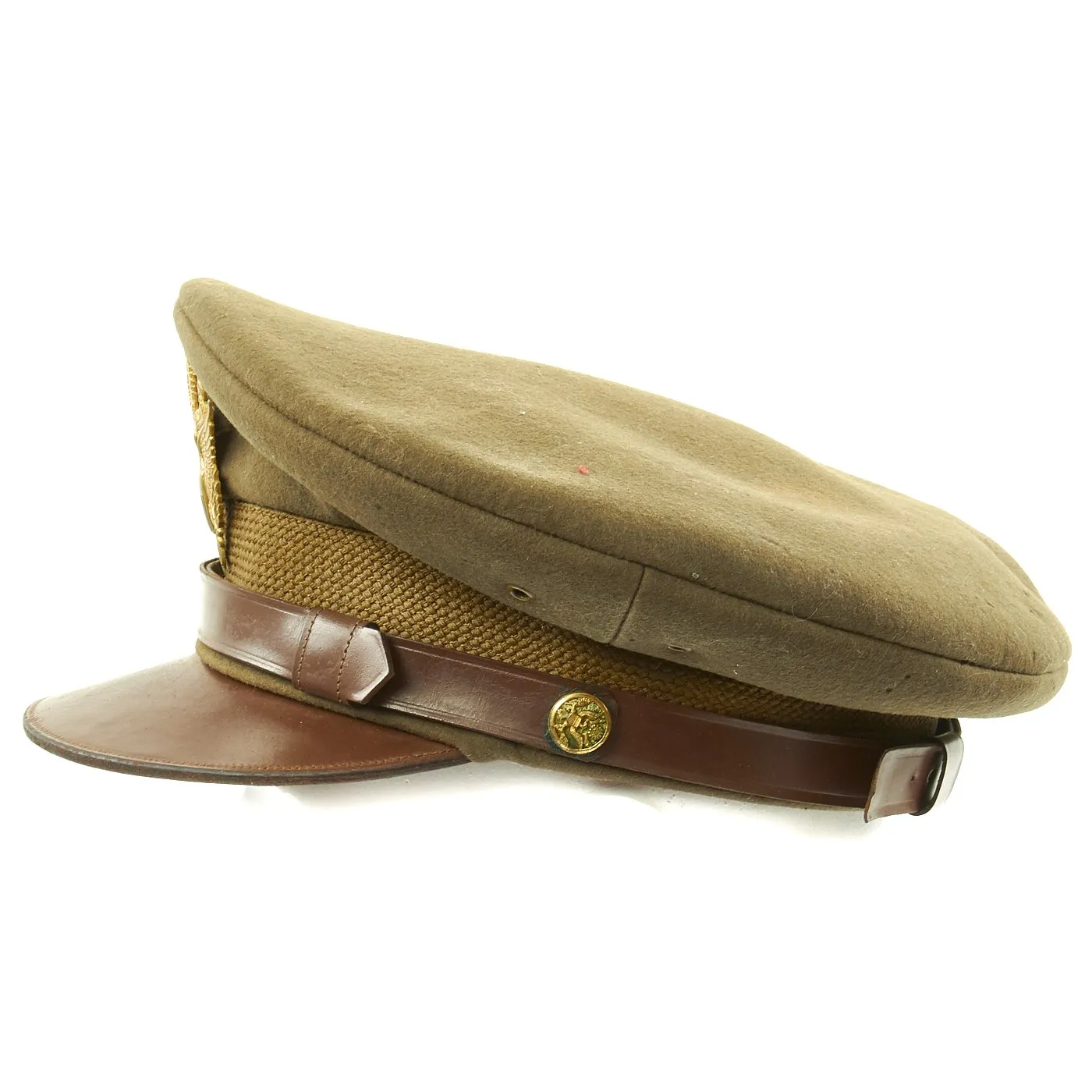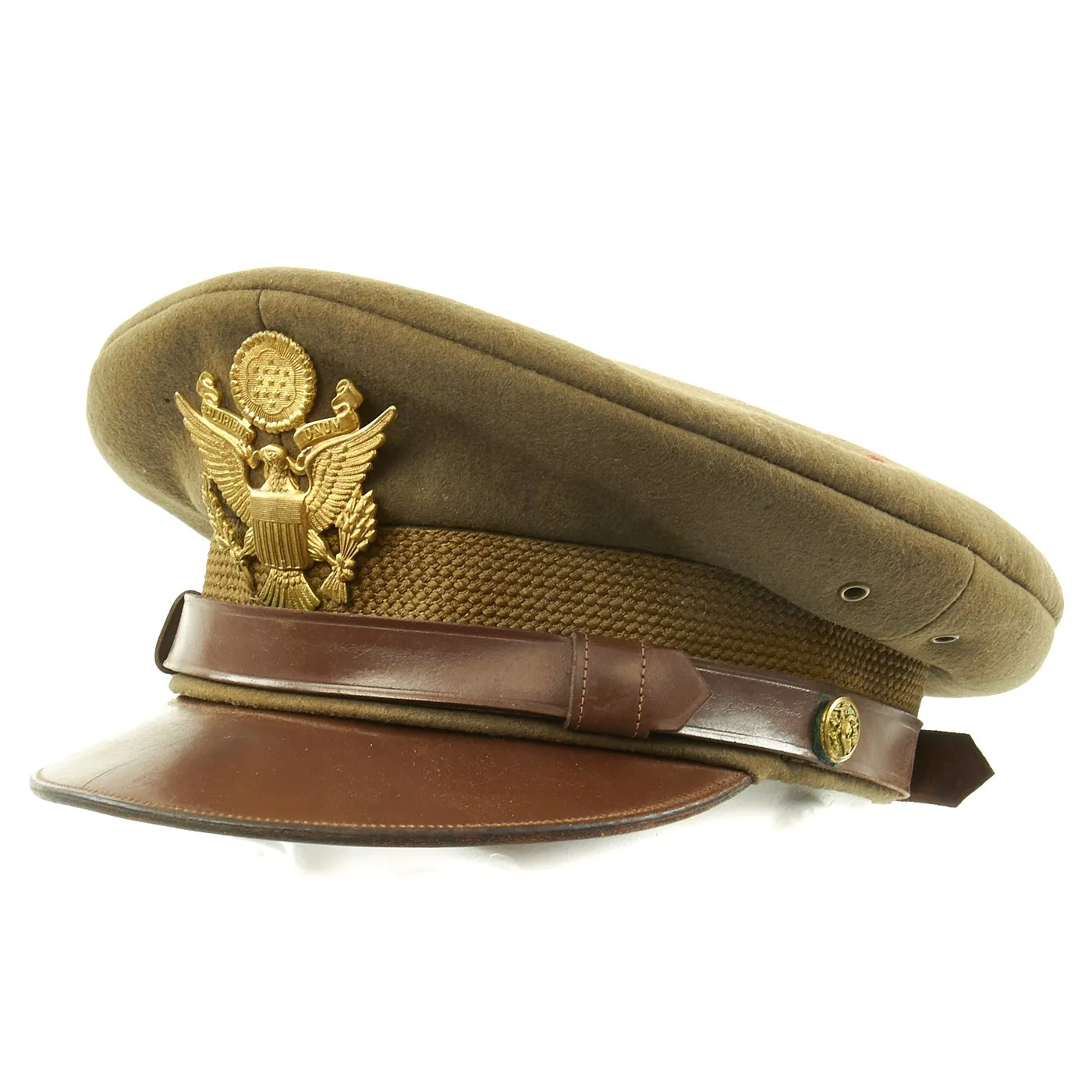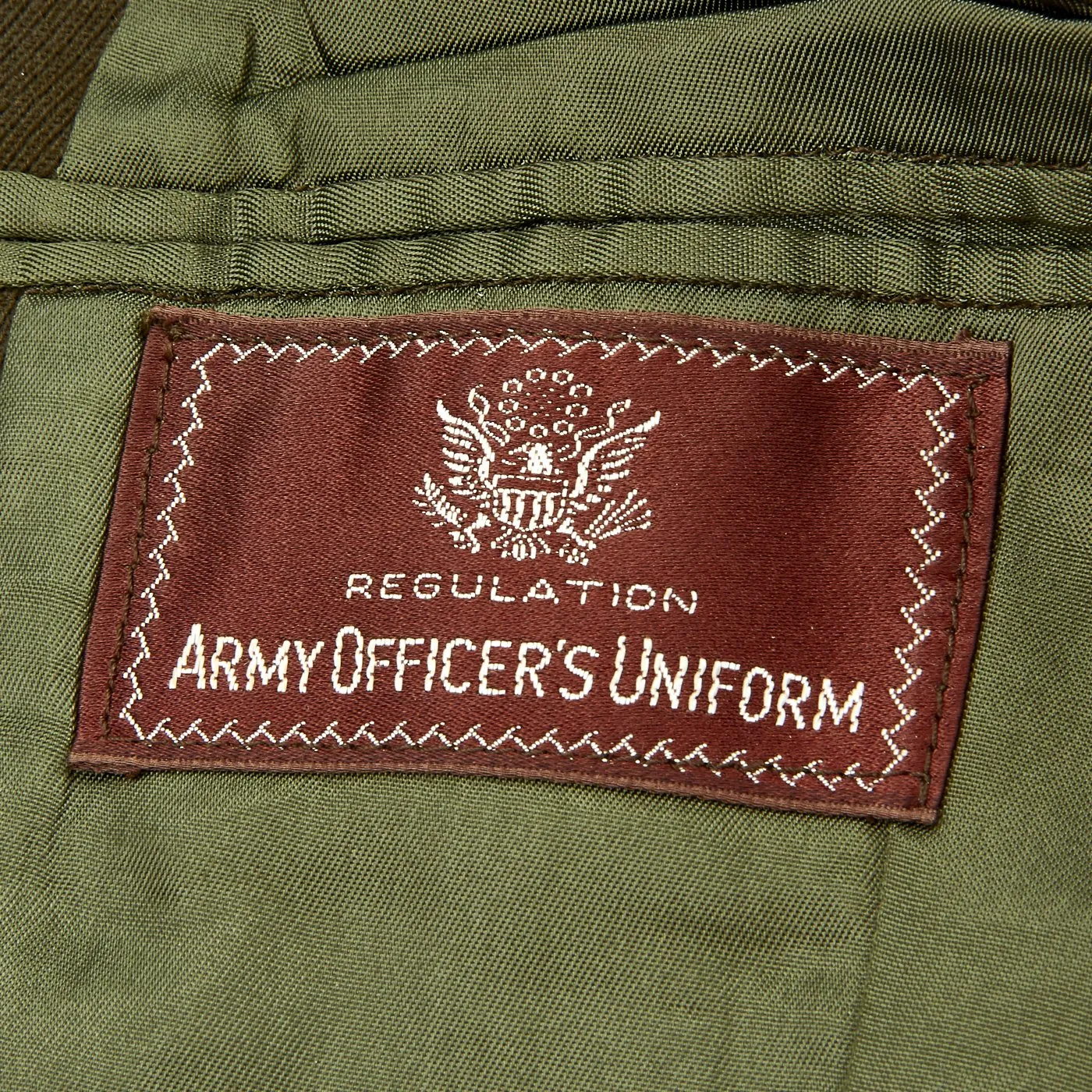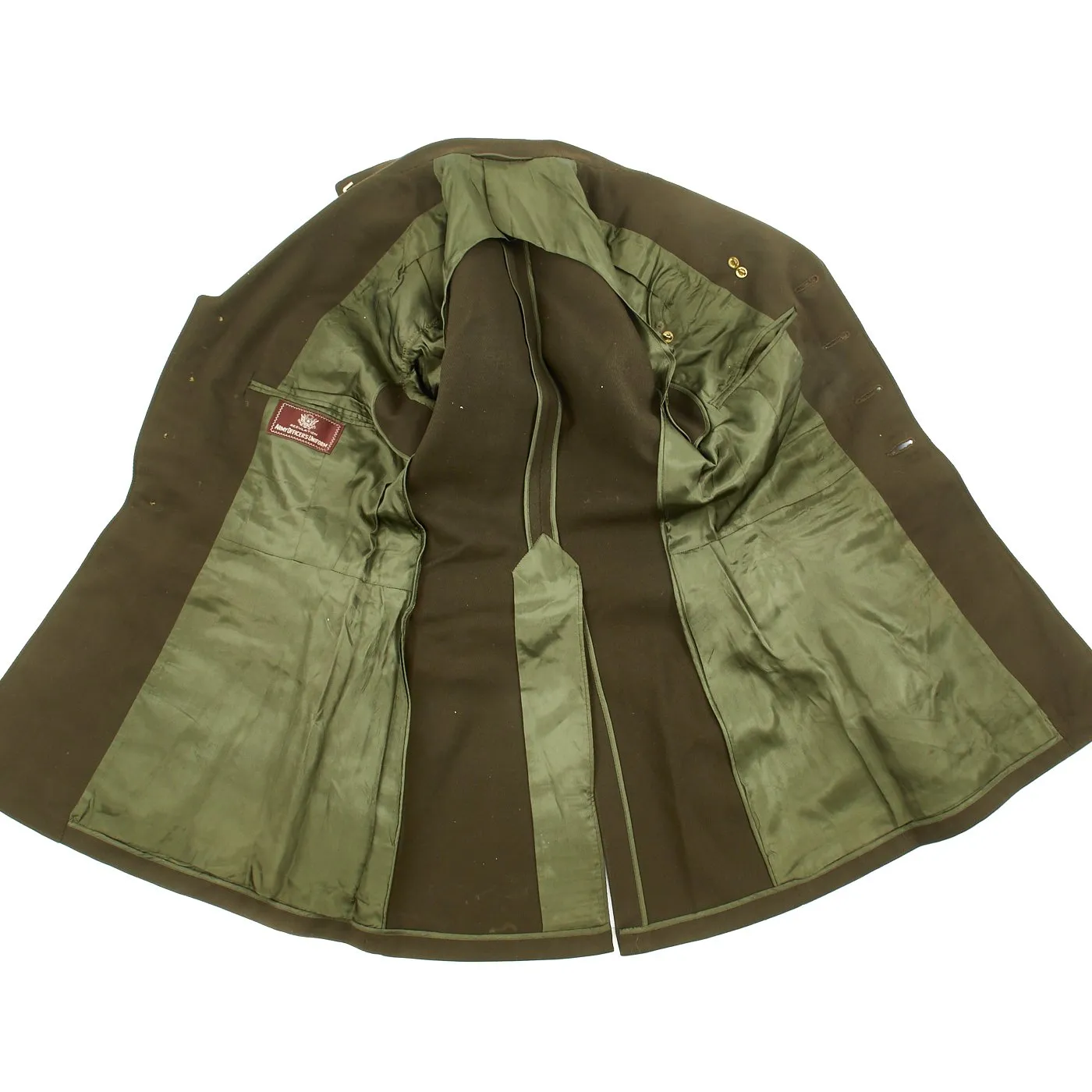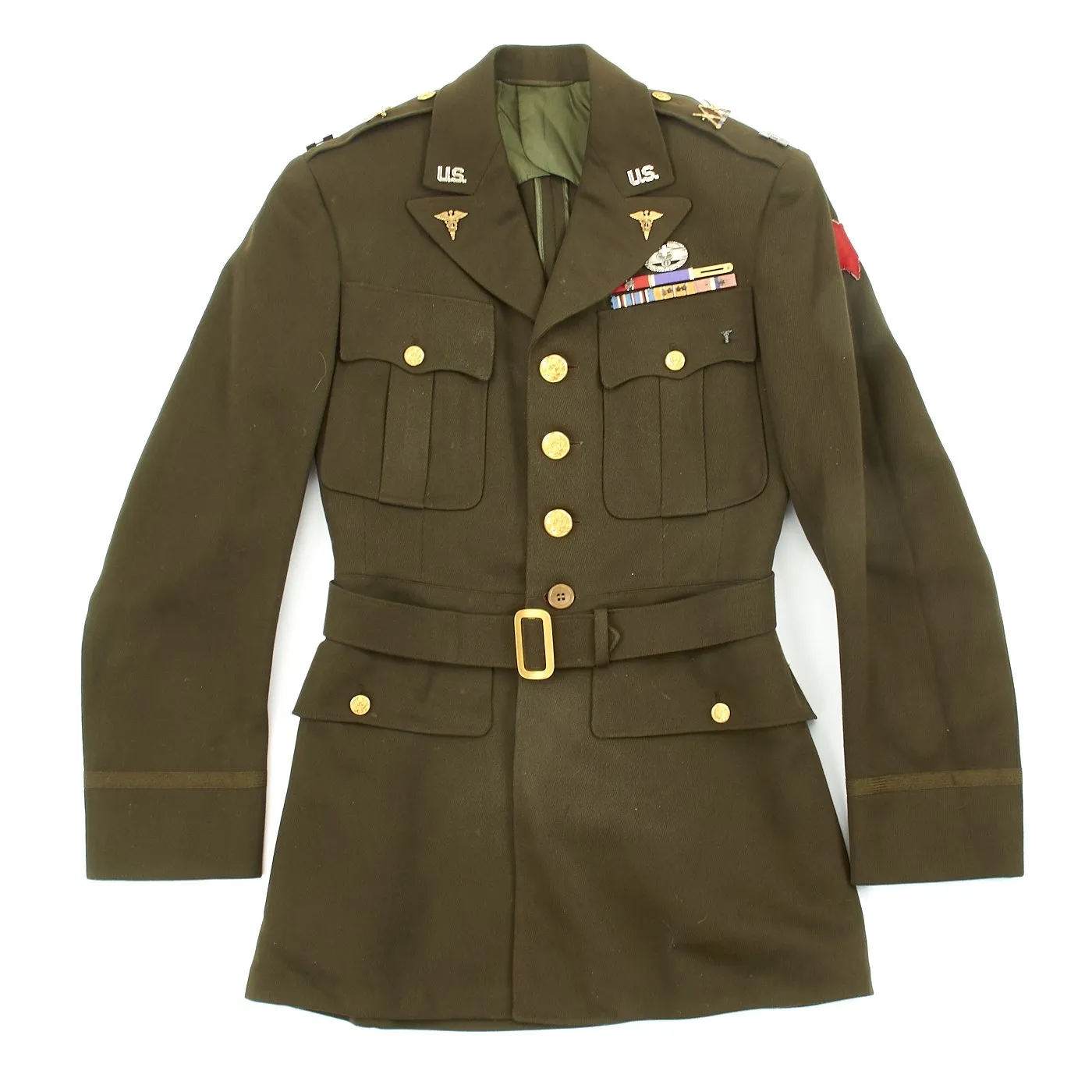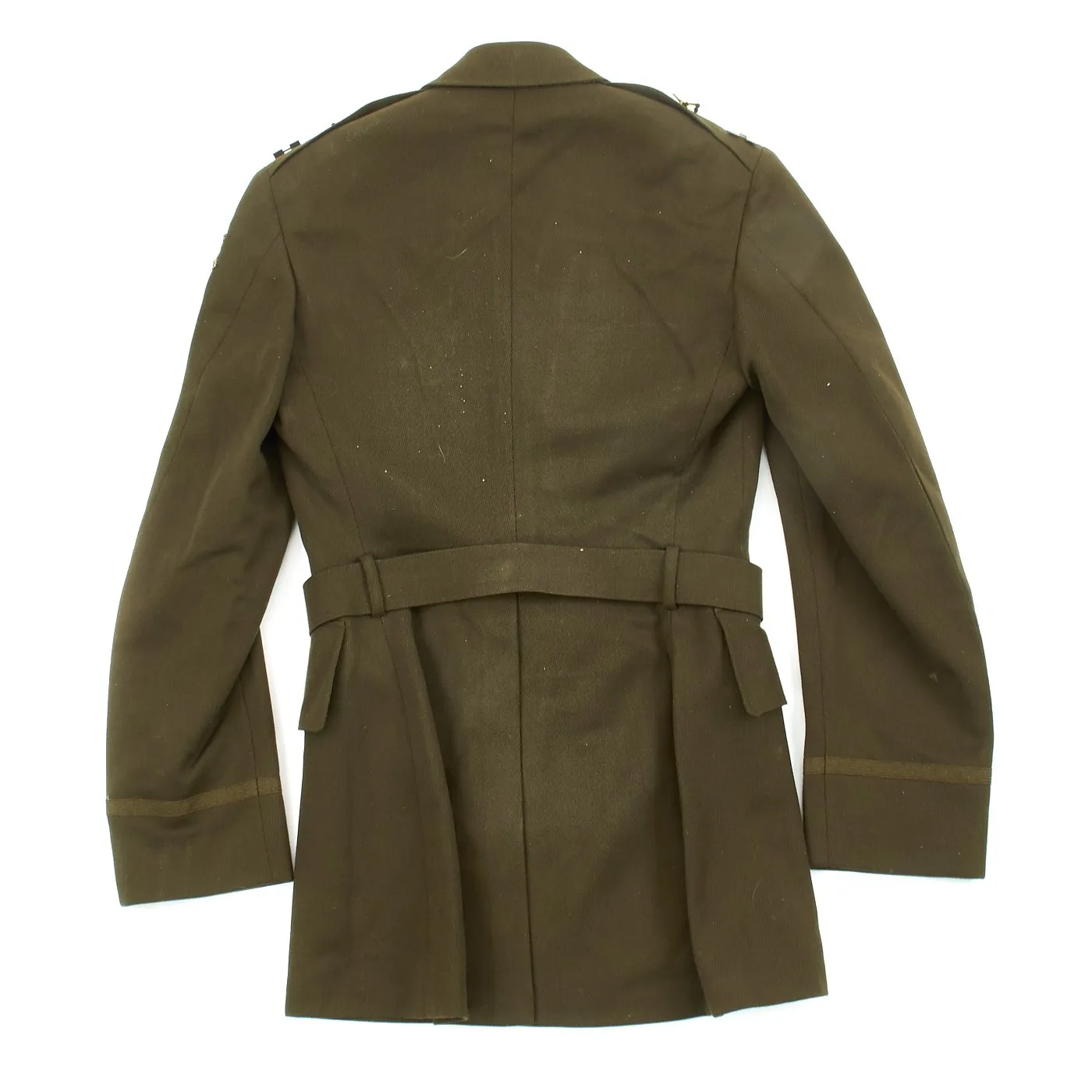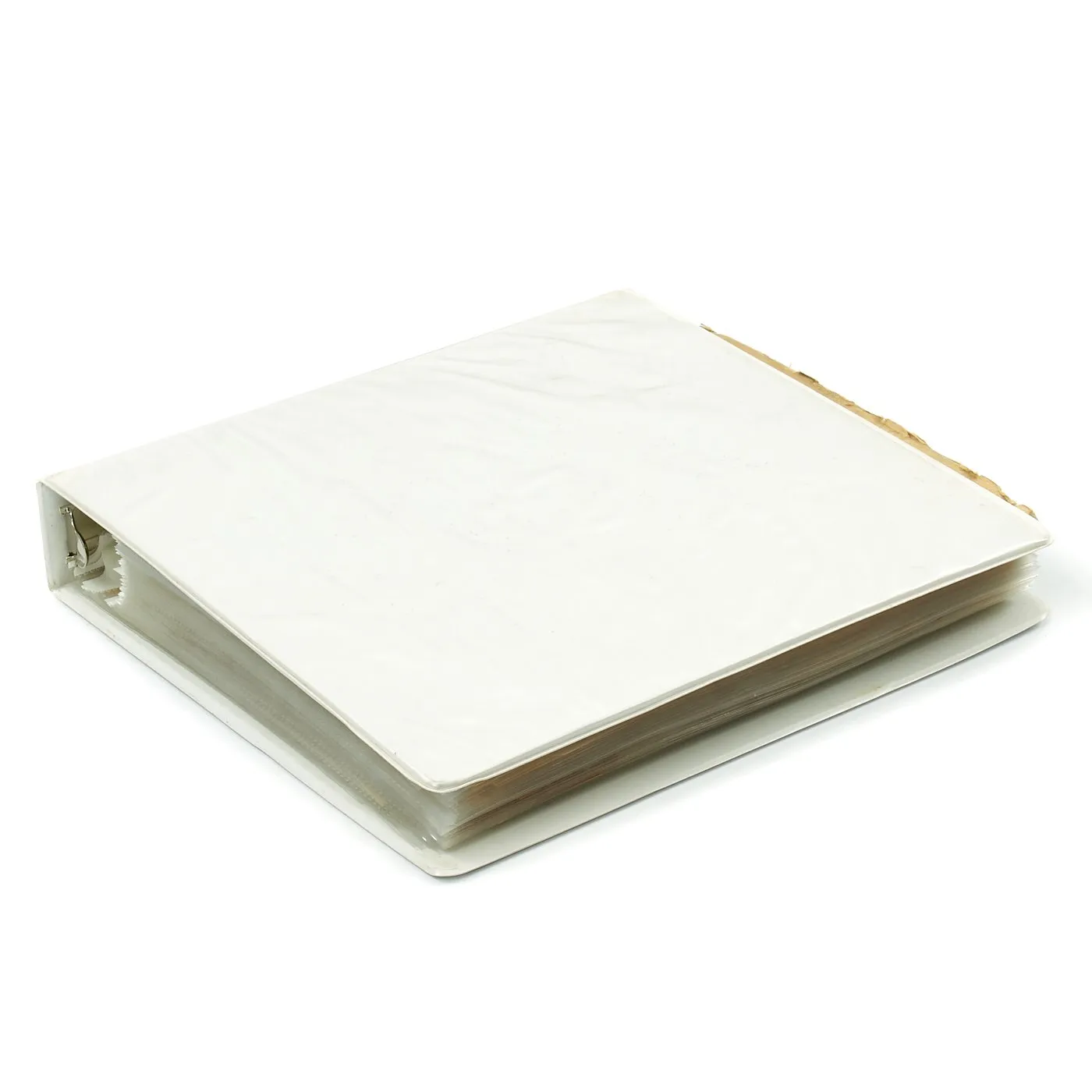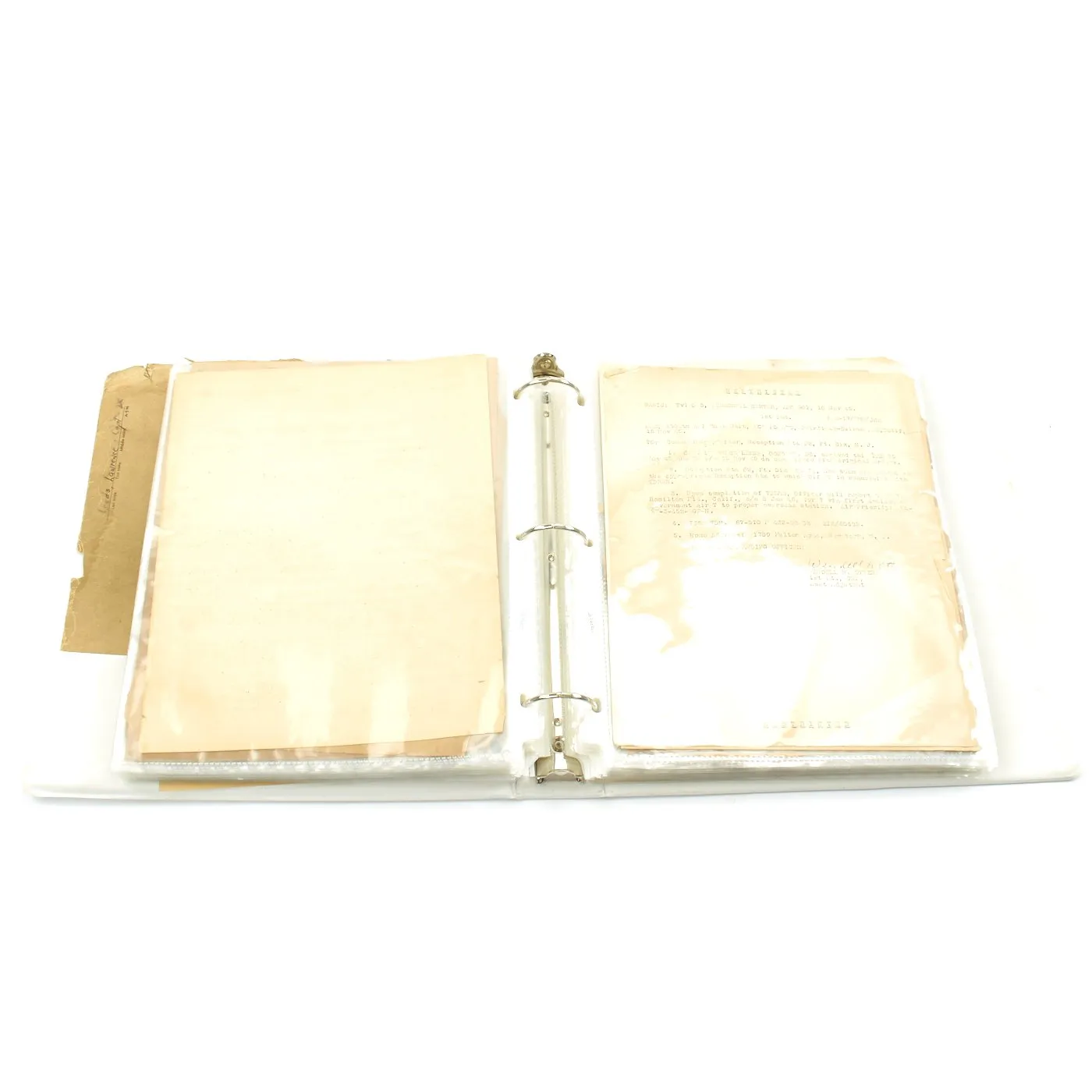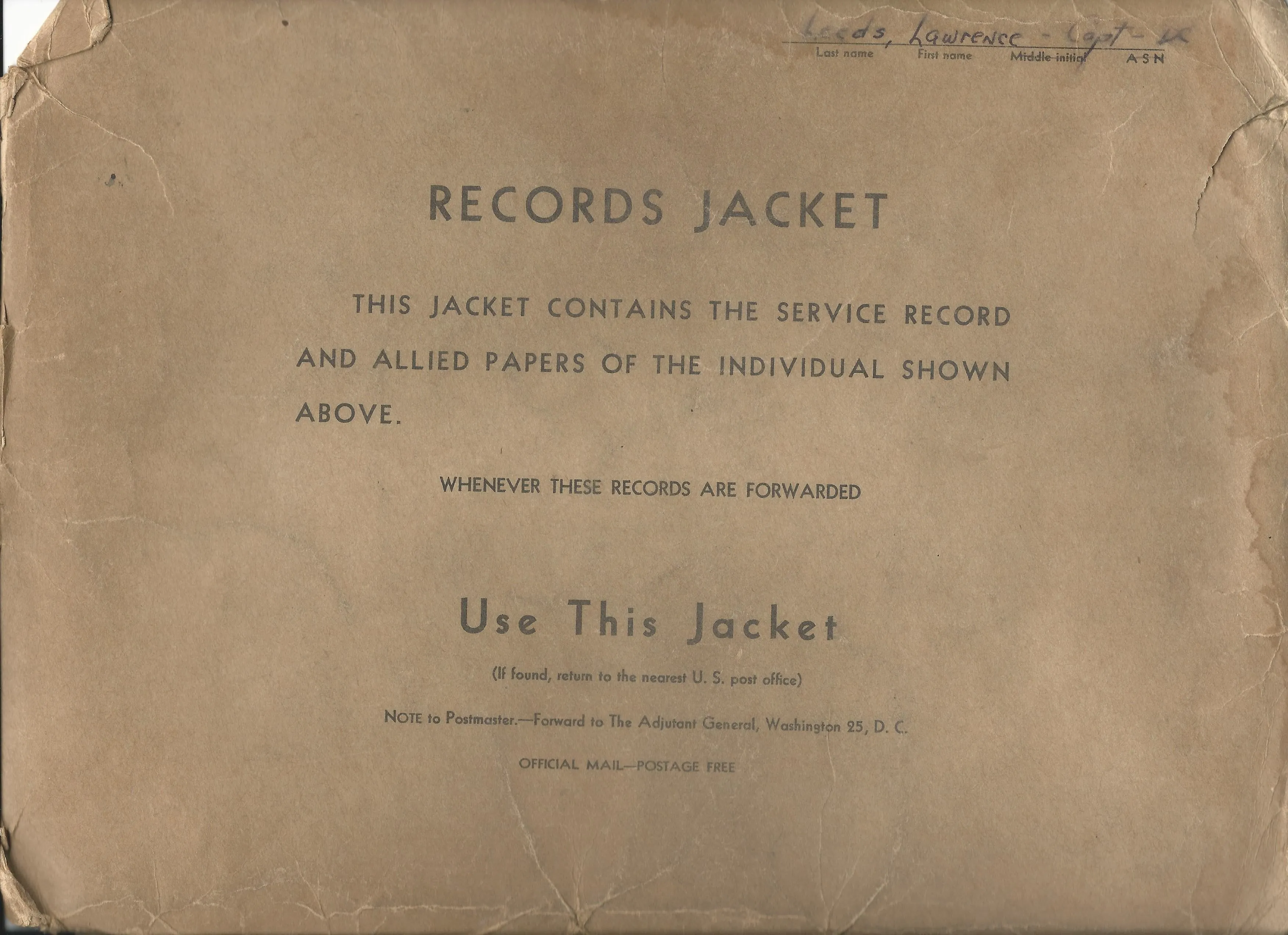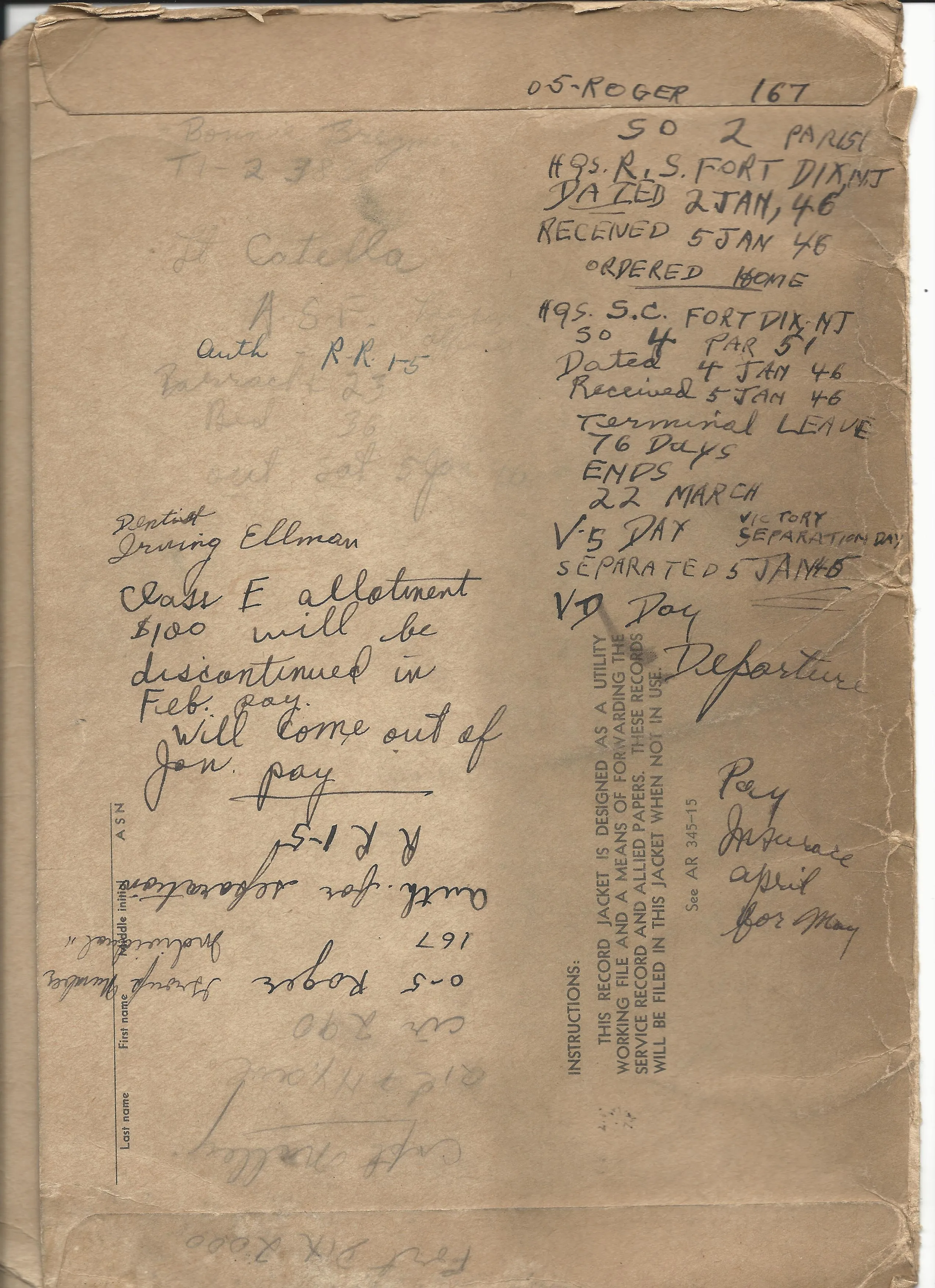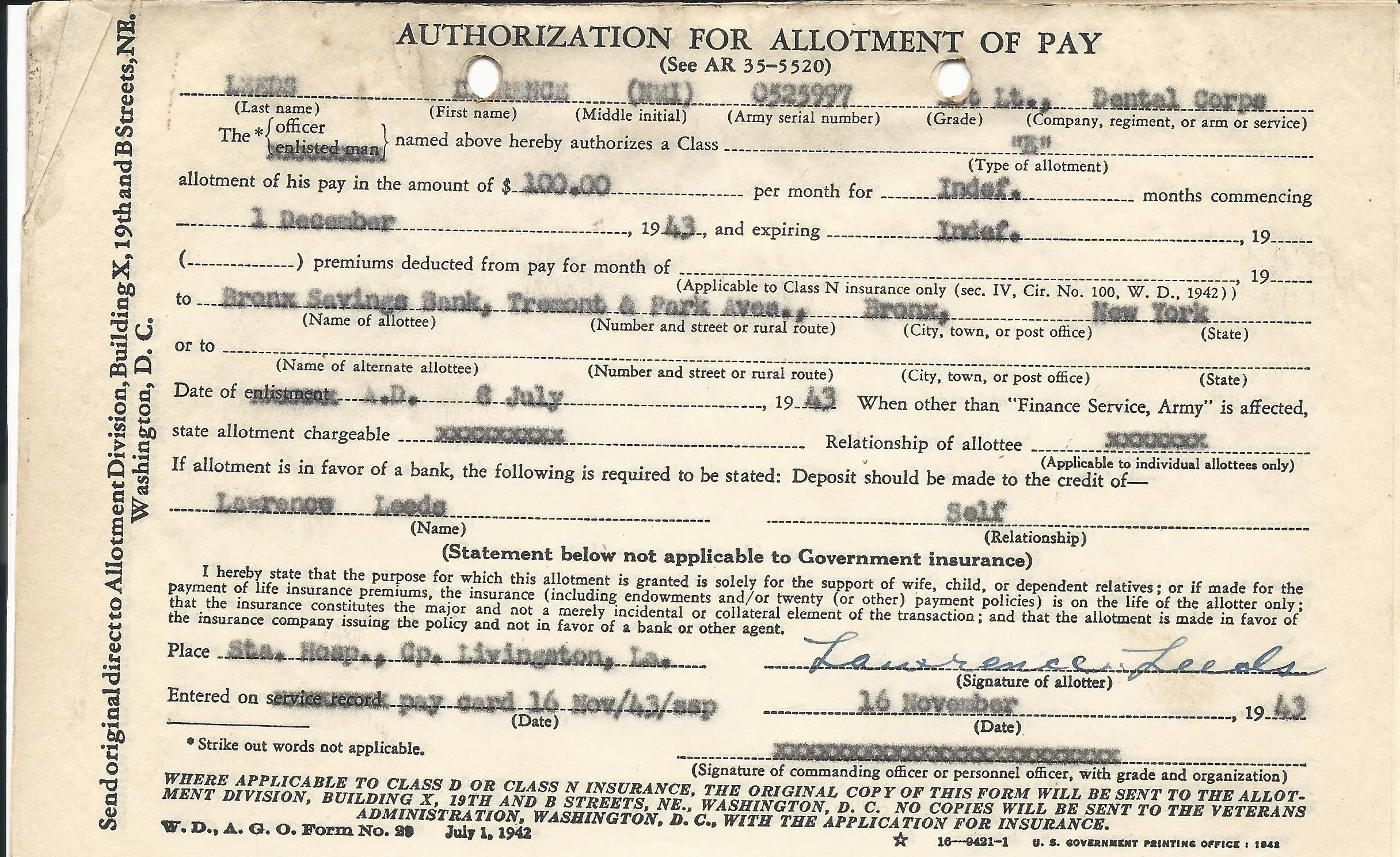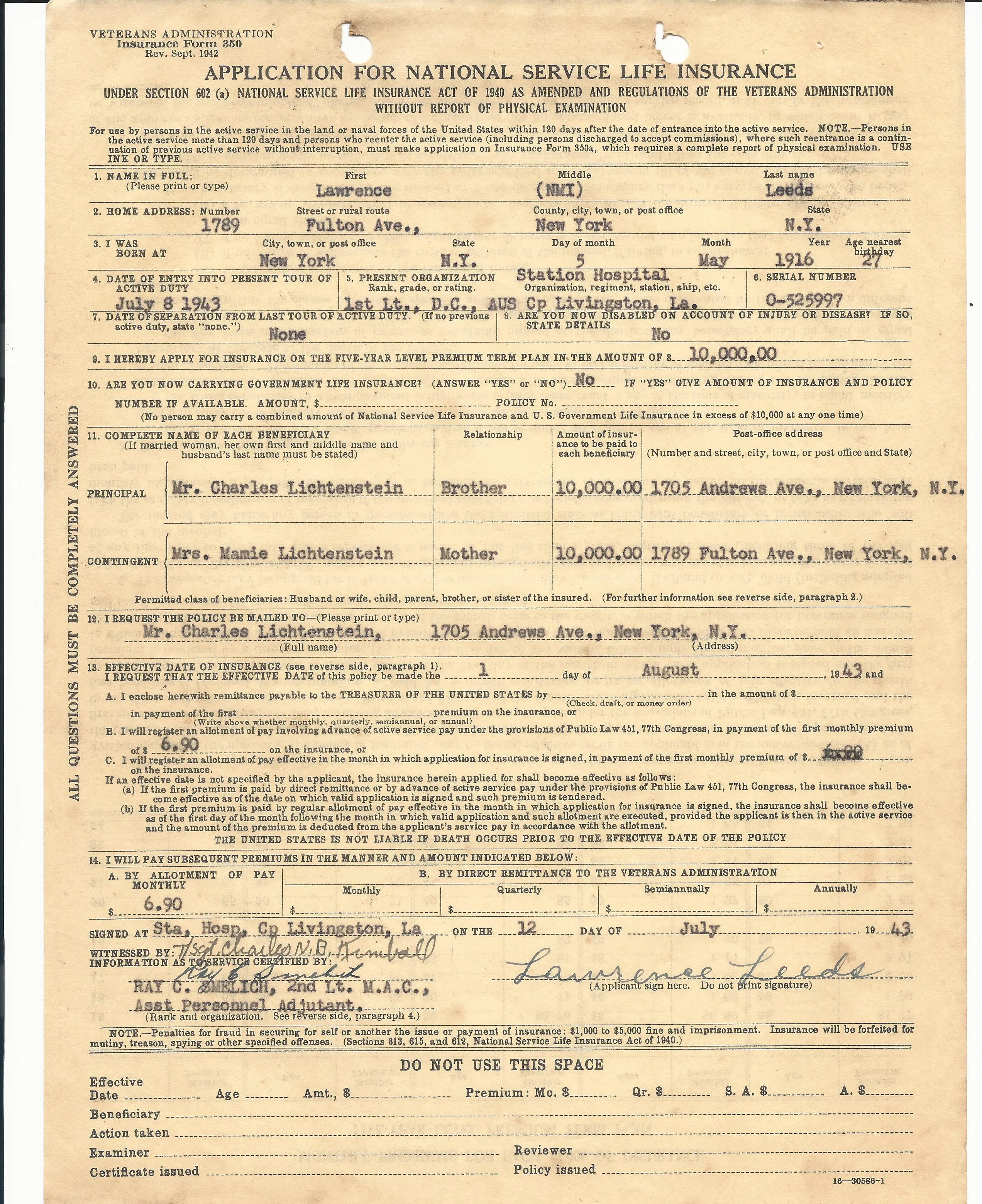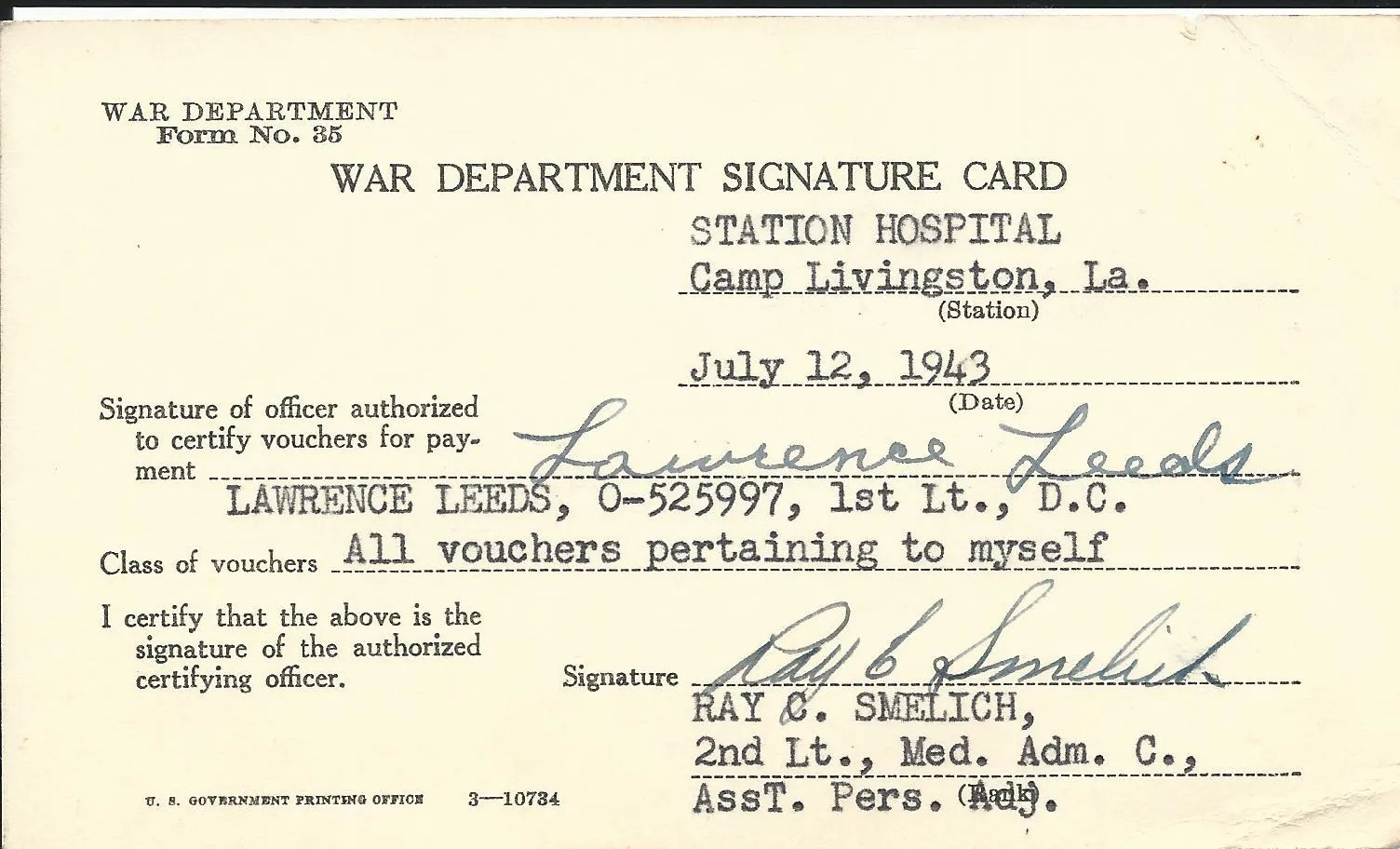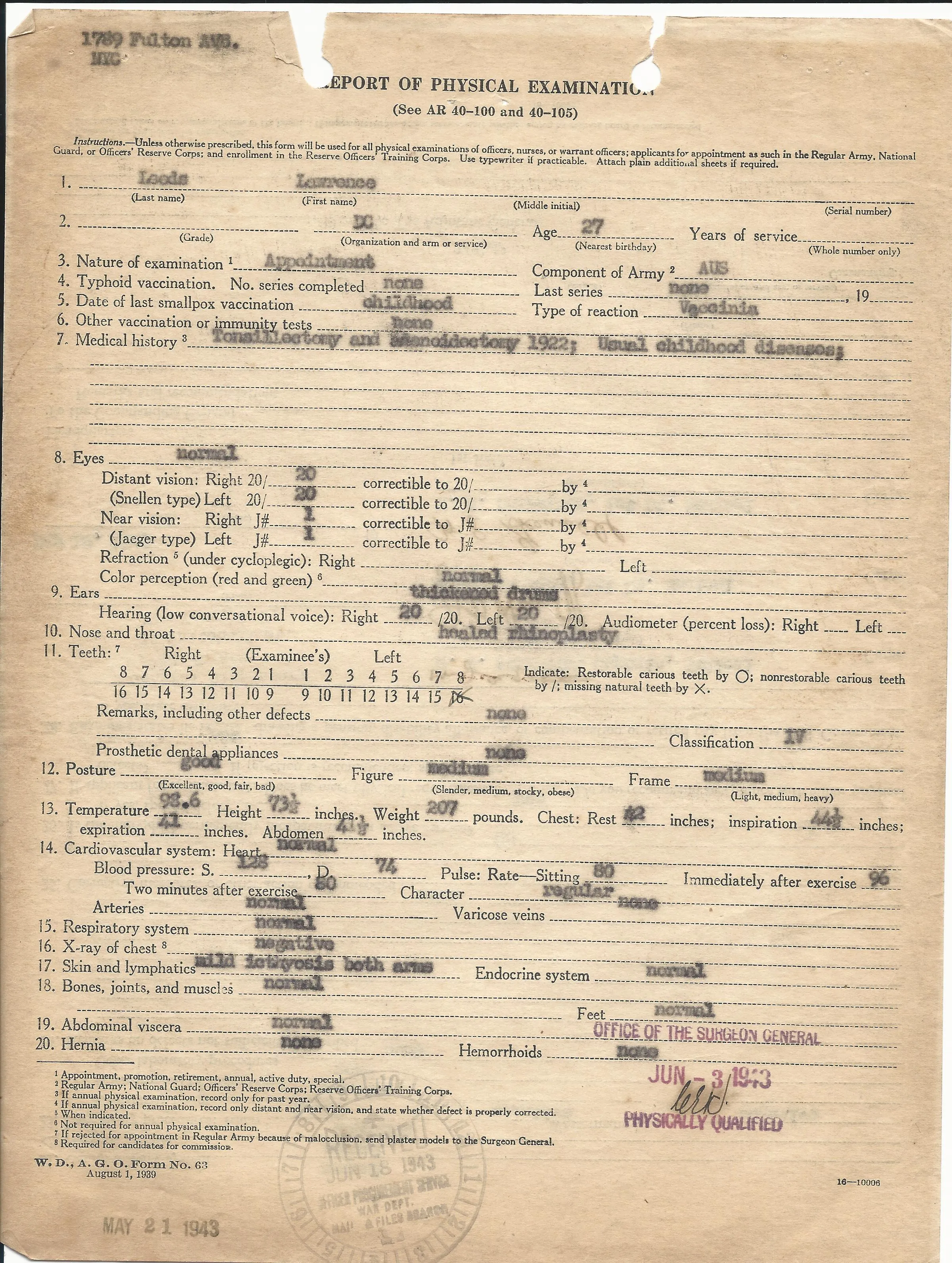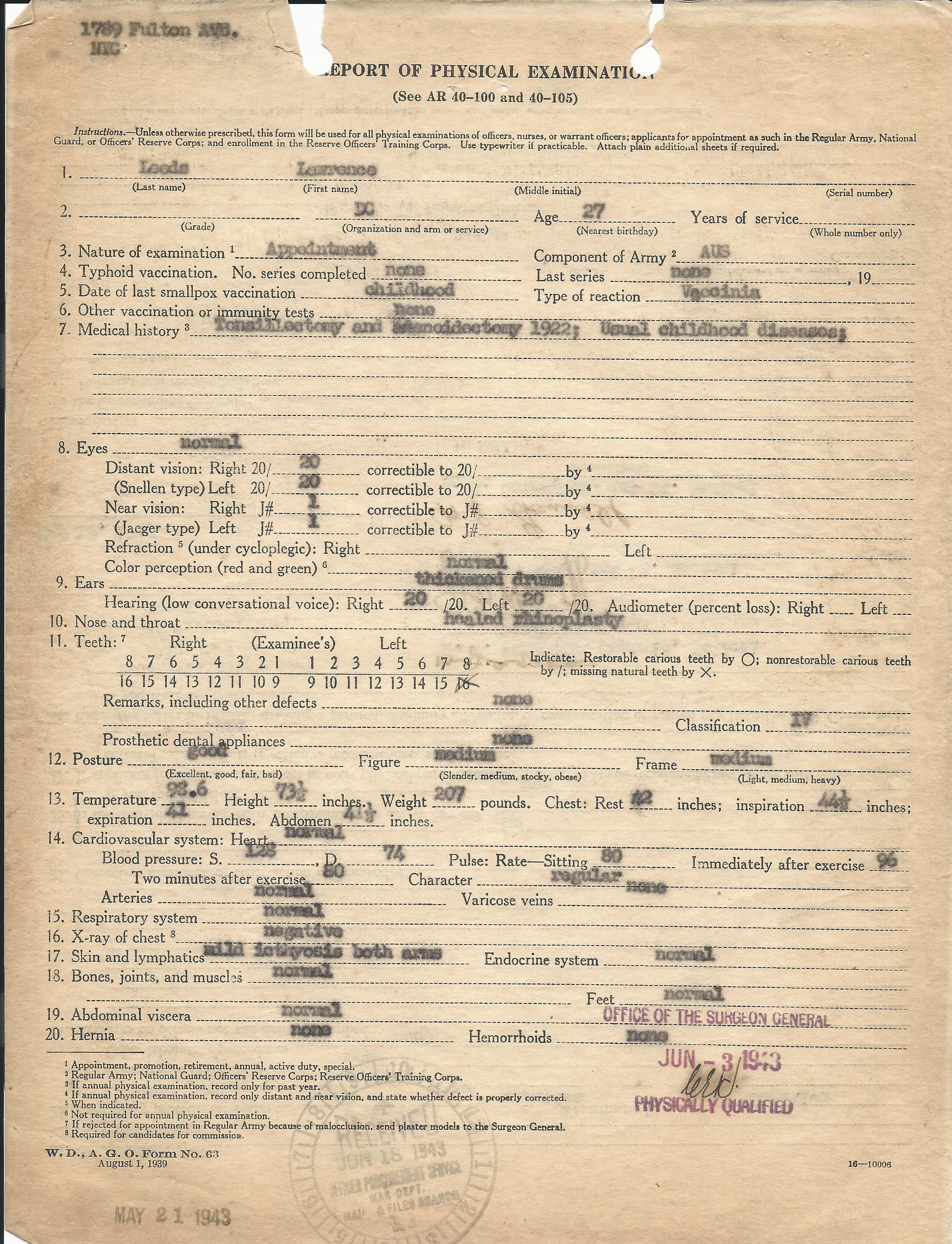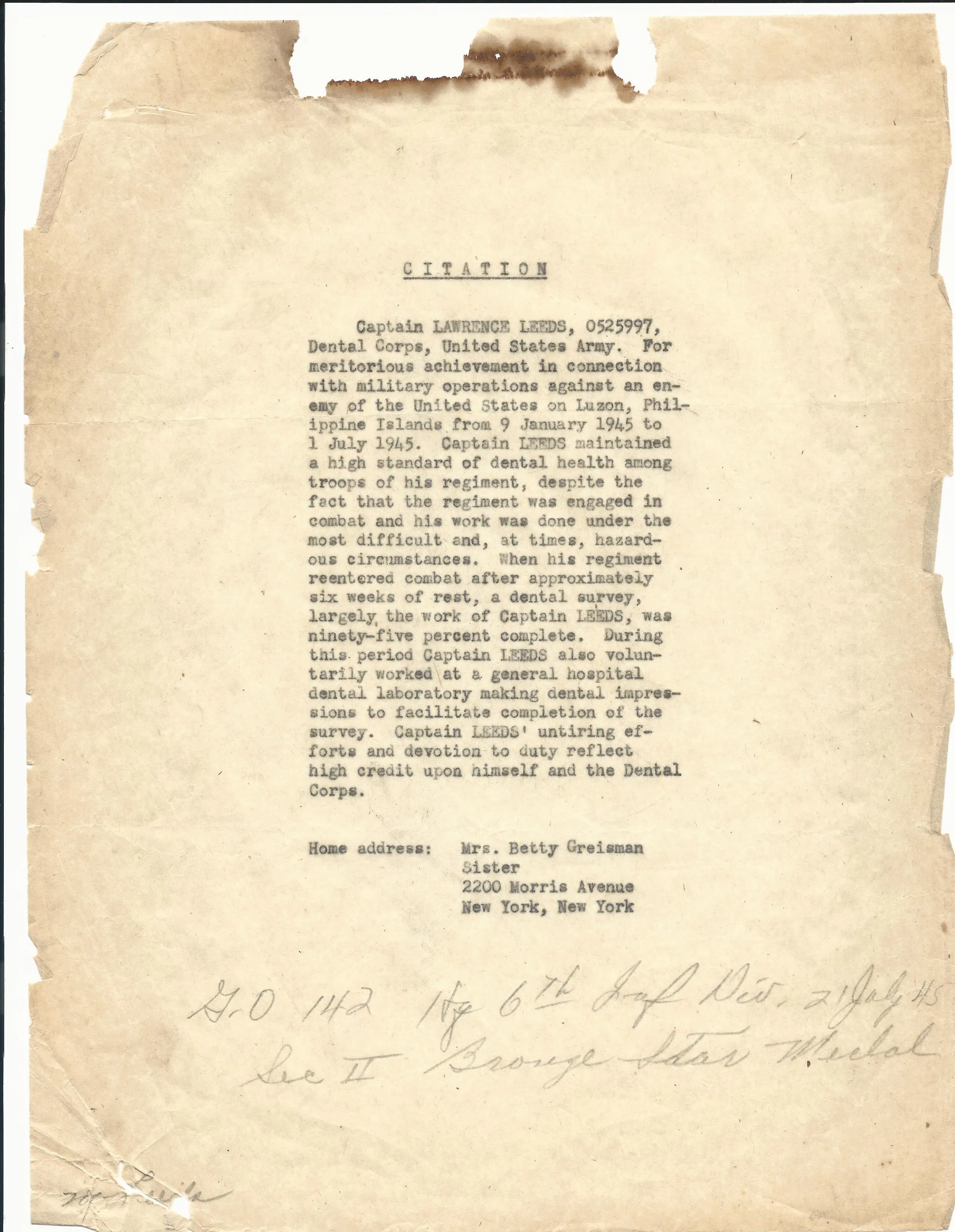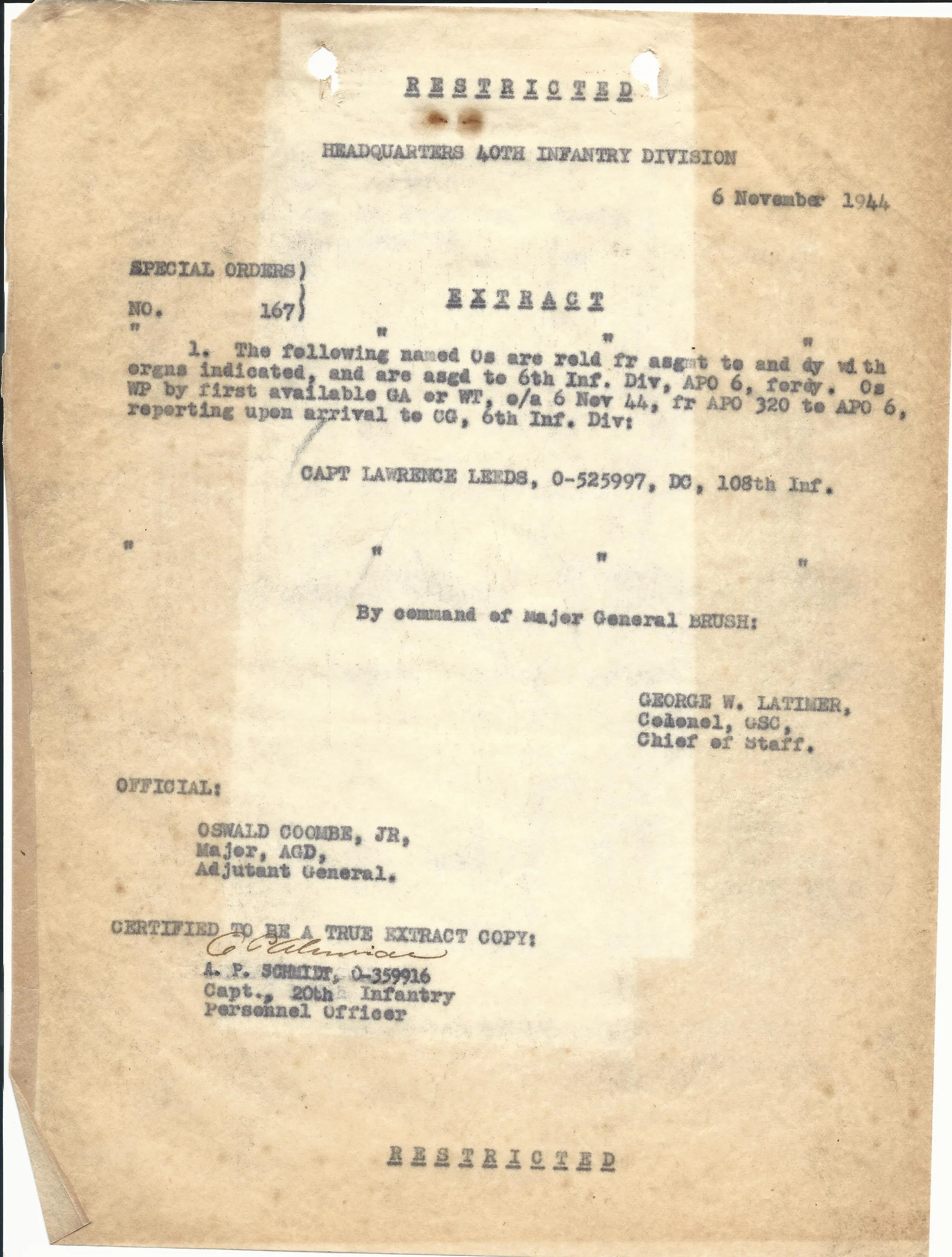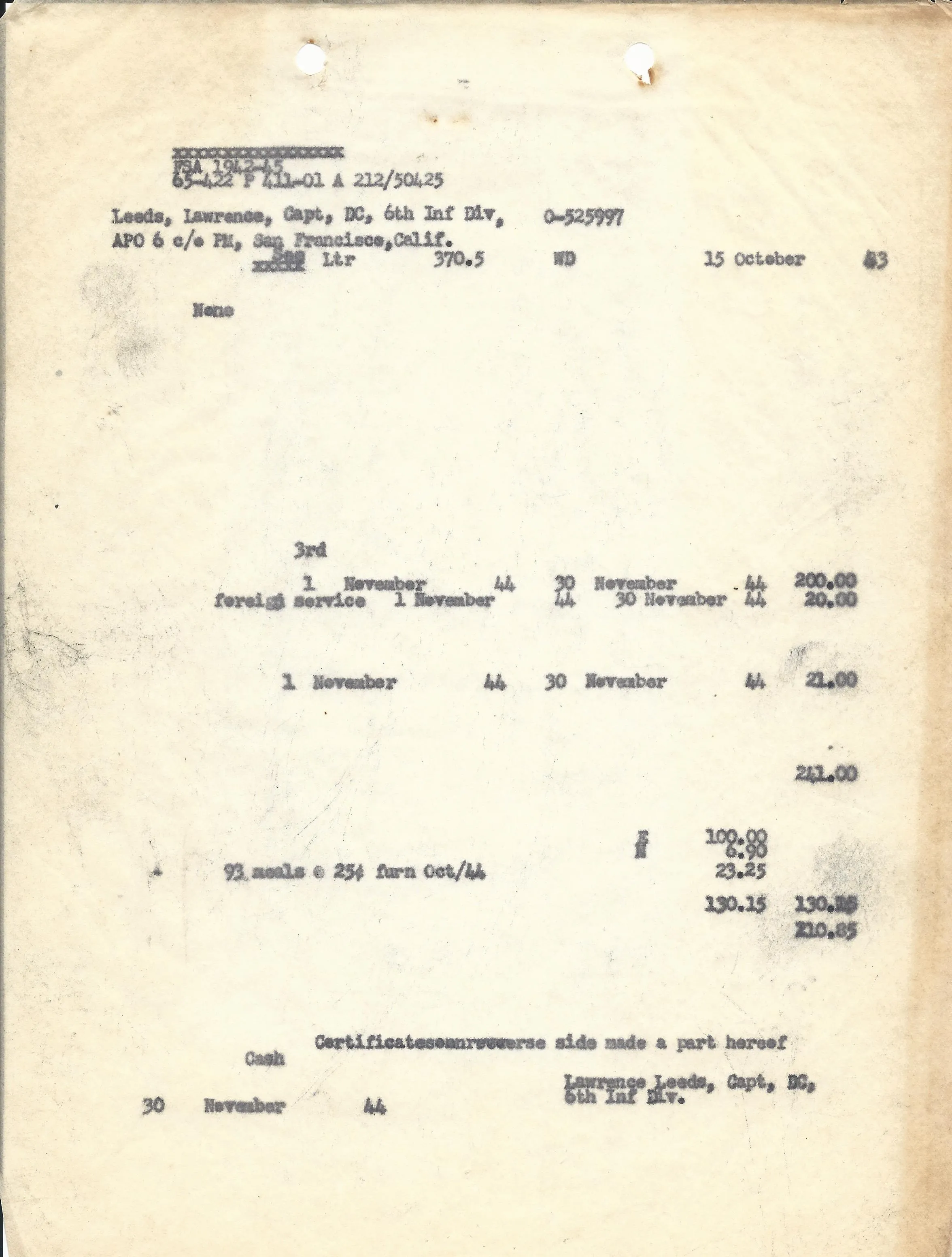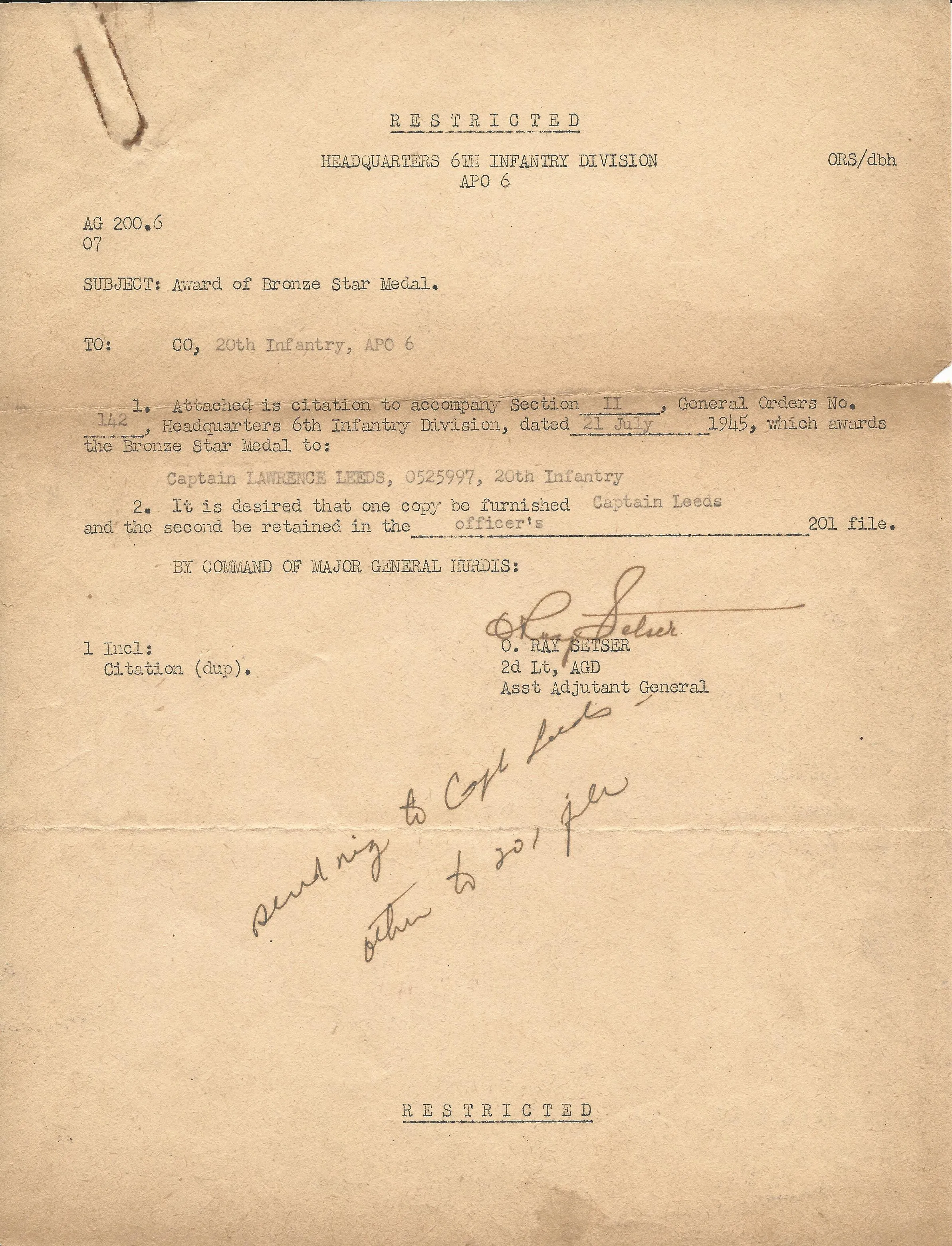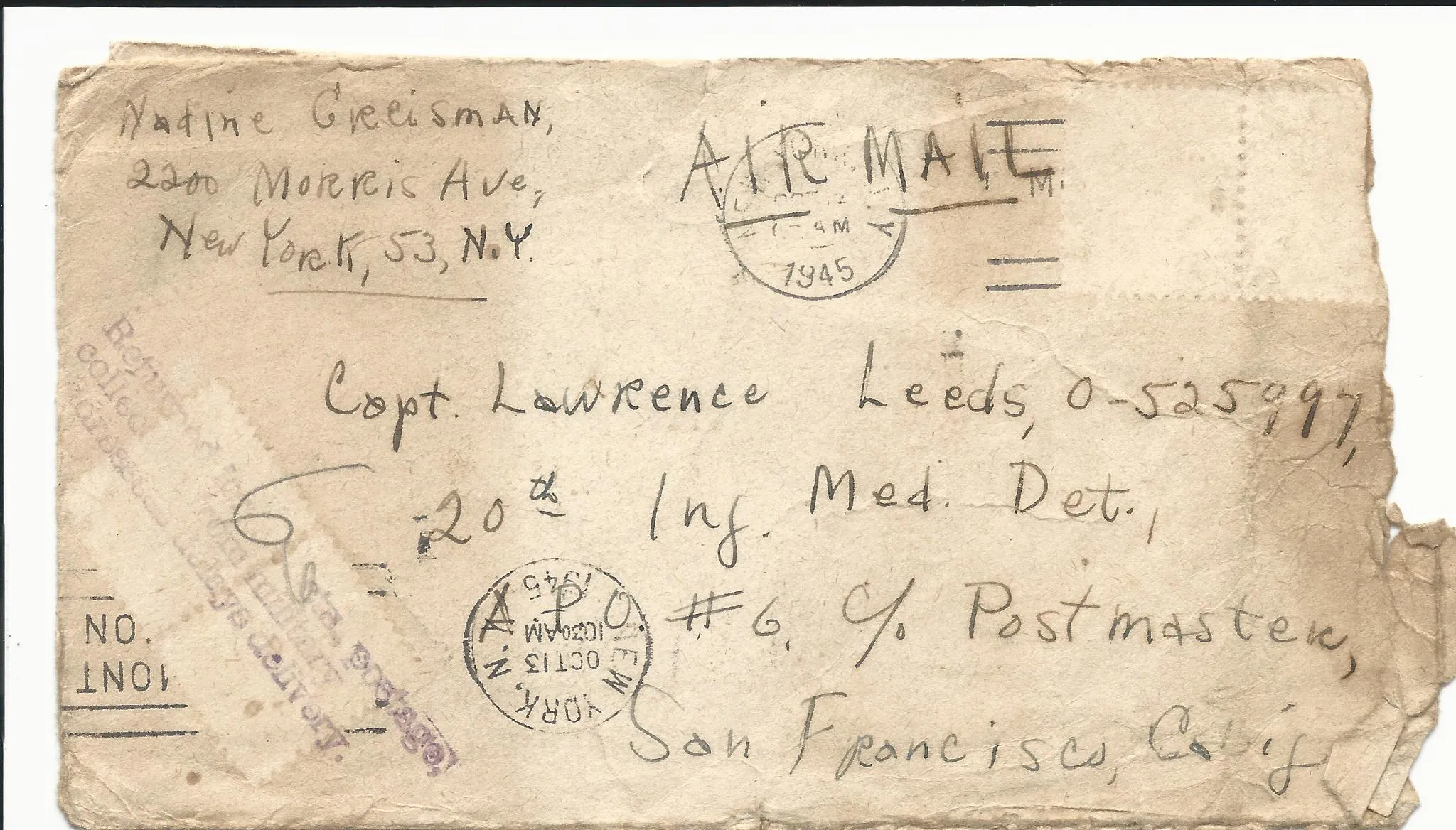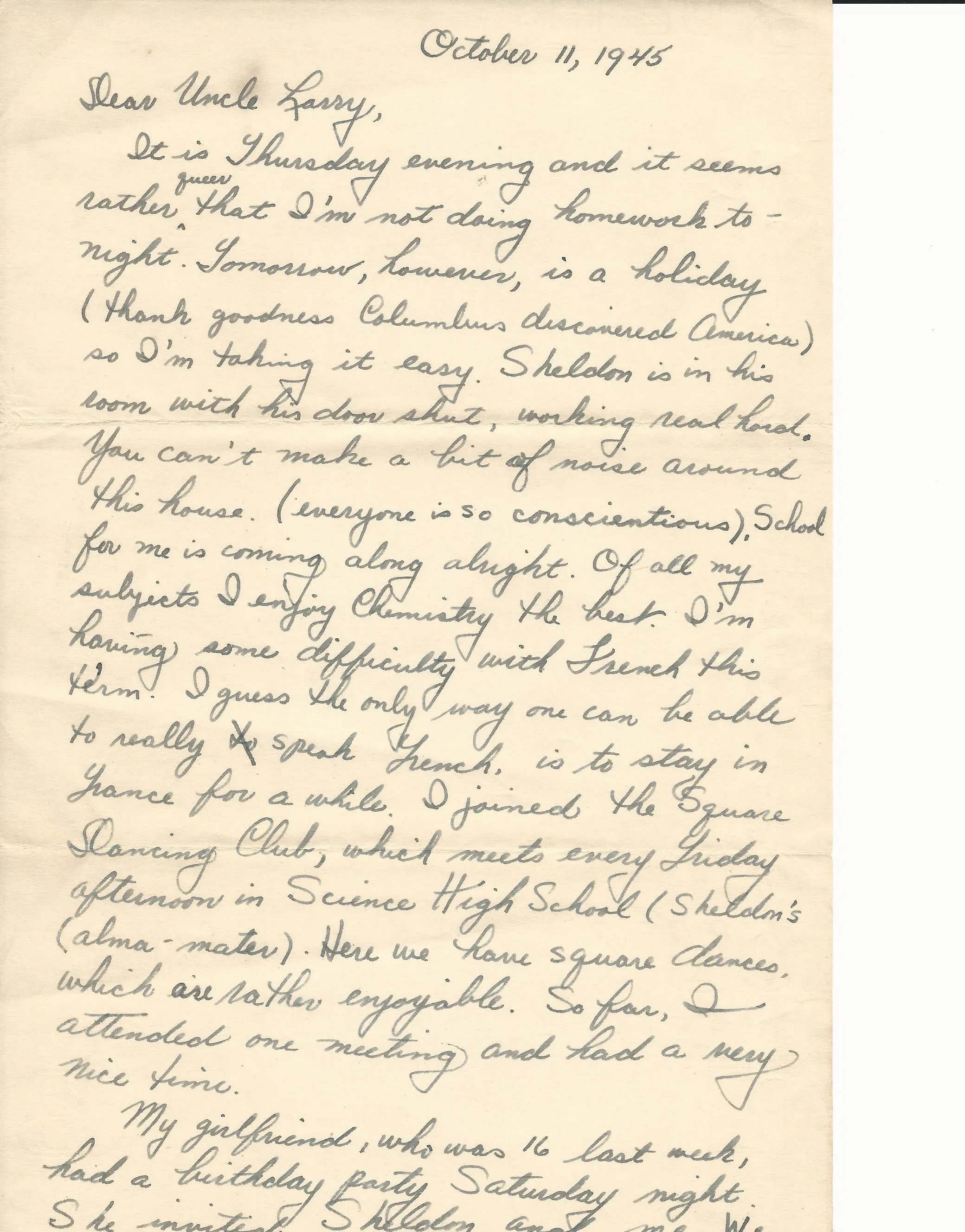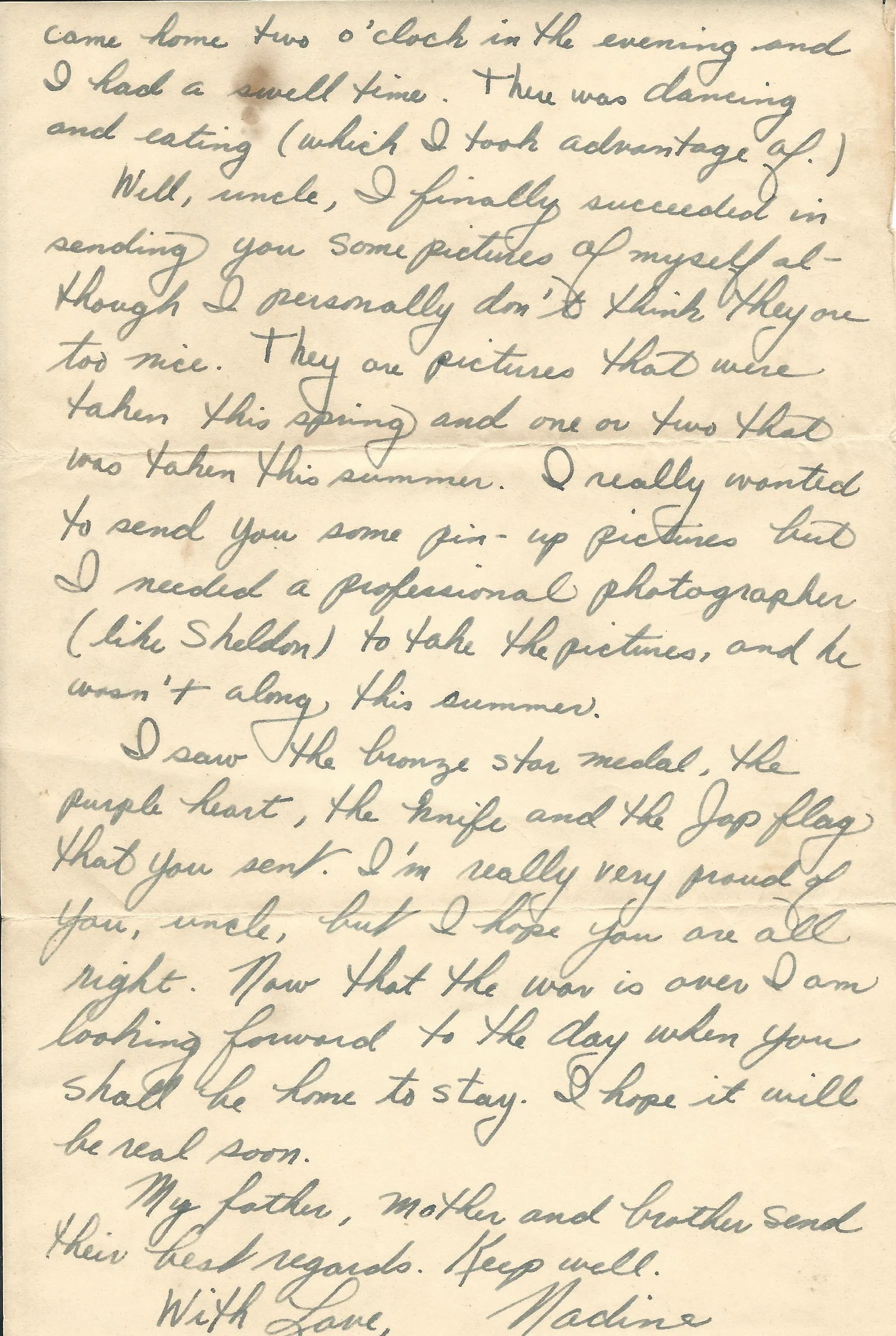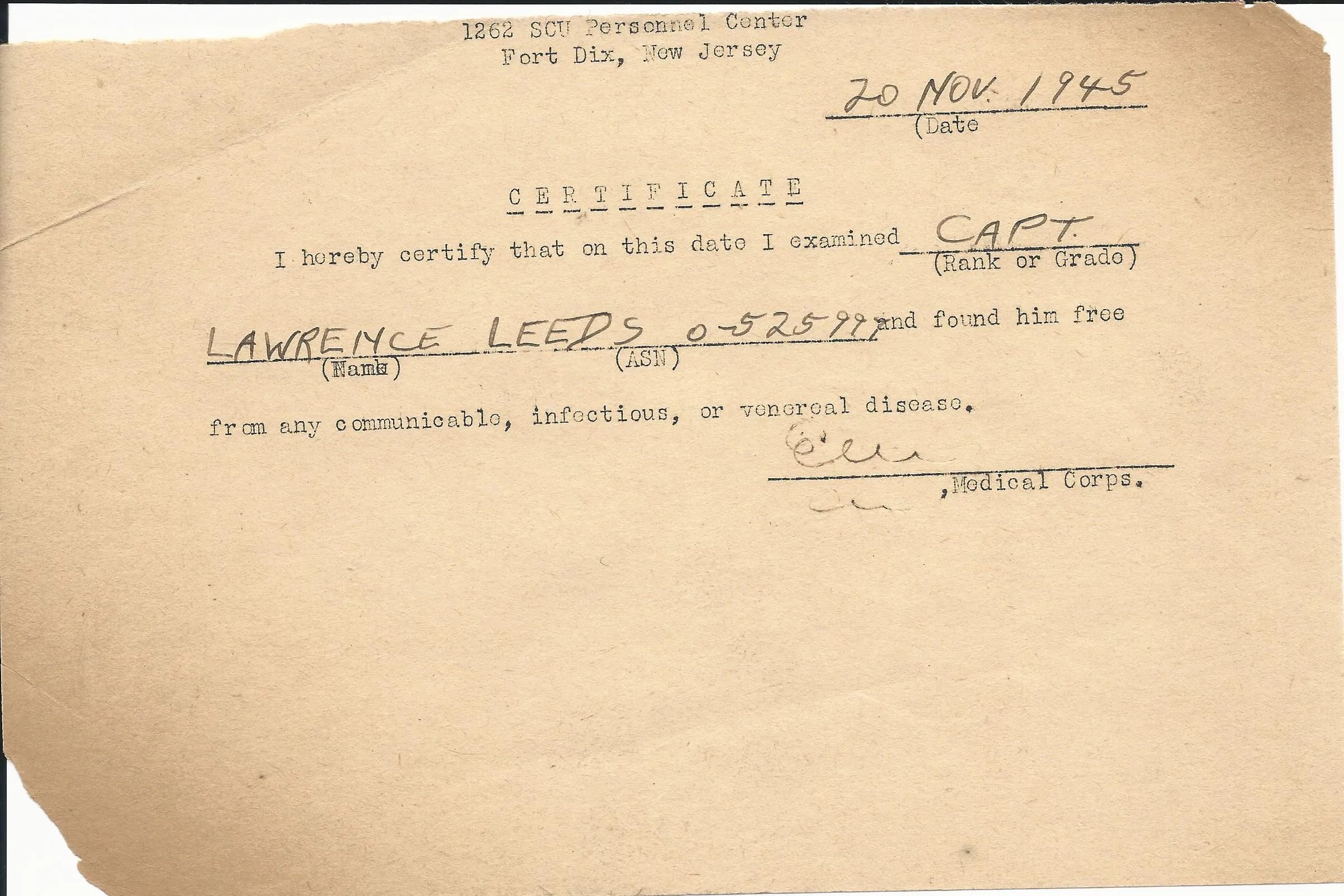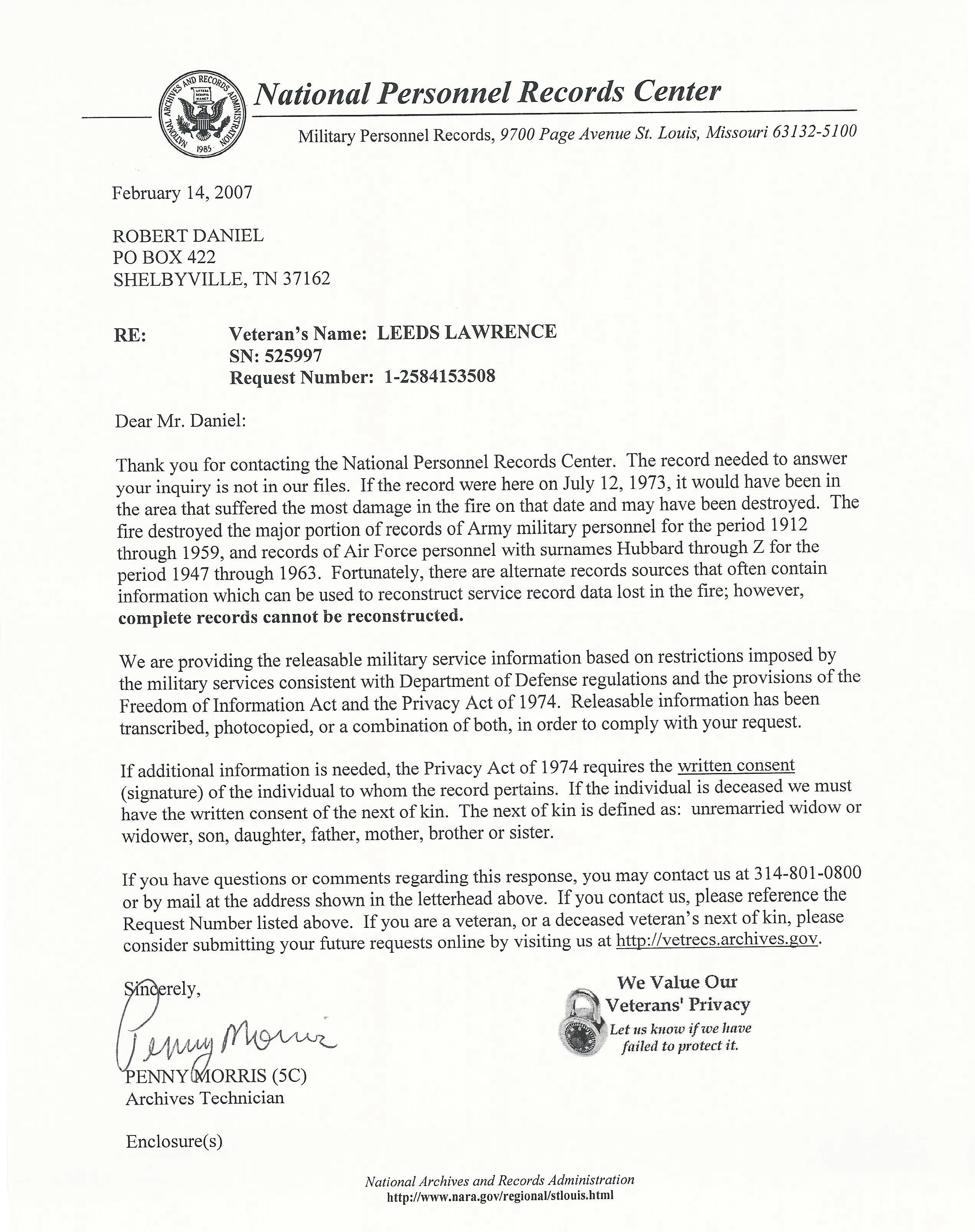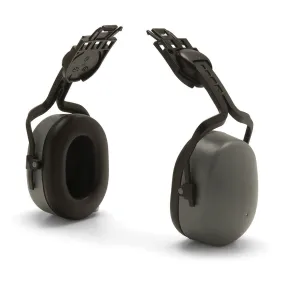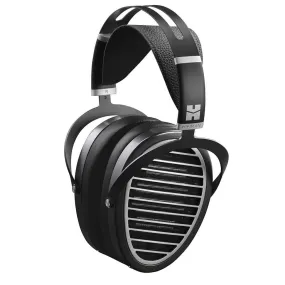Original Items: One-of-a-kind. Captain Lawrence Leeds, ASN 0525997 served on the U.S. Army from July 8th, 1943 to March 22nd 1946. He was a trained Dental Surgeon that was awarded two Bronze Star Medal with Oak Leaf Cluster. He served in the 40th Infantry Division 108th Infantry Regiment, then later in the 6th Infantry Division, 20th Infantry Regiment. He also earned his Combat Medic badge for service in the field during the push towards Manilla during the brutal battles for possession of Fort Stotsenburg, Clark Field, Top of the World, Hill 7, and Sacobia Ridge.
Included in this incredible comprehensive grouping are the following times:
- A uniform four pocket service cost with Sterling Silver Combat Medic Badge, Medal bar with the following awards: Bronze Star with Oak Leaf Cluster, Purple Heart, WWII Victory Medal, American Campaign, Asiatic-Pacific Theater Medal with Invasion Arrowhead and three battle stars, Philippine Liberation Medal with two stars (one missing).6th Infantry Division insignia patch to left shoulder, medical lapel pins, Captains bars, Infantry crossed rifle enamel pins.
- Officer Visor Cap.
- Original 8 x10 photo of Captain Leeds wearing this exact service coat and visor cap!
- Officer overseas garrison side cap with captains bars.
- Army issue cotton khaki shirt.
- Massive binder with hundreds of pages of original wartime documents, including his original Bronze Star Citation, handwritten correspondence, and copies research.
A lovely named set with some fantastic research potential. Ready to add to your collection!
Approximate Measurements:
Jacket
Collar to shoulder: 9.5"
Shoulder to sleeve: 25”
Shoulder to shoulder: 15”
Chest width: 18"
Waist width: 14"
Hip width: 21"
Front length: 33"
Shirt
Collar to shoulder: 9.5"
Shoulder to sleeve: 24”
Shoulder to shoulder: 15.5”
Chest width: 20"
Waist width: 20"
Hip width: 19"
Front length: 33"
In January 1944 the division landed on the South Pacific island of Guadalcanal, which had been largely secured by U.S. forces a year earlier. That April they moved to Cape Gloucester on New Britain, with the 108th being stationed at Arawe in the south. This was a more active area where the regiments of the 40th conducted combat patrols, since there were still many Japanese troops on the island. As they did on Guadalcanal, however, the men of the 108th found that their most dangerous enemy on Cape Gloucester was not the Japanese Army but the harsh jungle climate.
On 28 November the 40th Infantry Division was concentrated at Borgen Bay to prepare for the invasion of Luzon, the largest and most strategically important of the Philippine Islands. The 108th Regimental Combat Team—composed of the 108th Infantry Regiment, the 164th Field Artillery Battalion, Co. C of the 115th Engineer Combat Battalion, and Co. C of the 115th Medical Battalion—was in reserve on S-Day—9 January 1945, when the Sixth Army landed at Lingayen Gulf. Japanese resistance intensified as the GIs moved south toward Manila, and the 108th fought brutal battles for possession of Fort Stotsenburg, Clark Field, Top of the World, Hill 7, and Sacobia Ridge. The 43rd Infantry Division relieved the 40th on 2 March. Six days later the 108th was detached and sent to the island of Leyte to assist in mopping up defeated Japanese forces. The regiment's 2nd Battalion also cleared Masbate and other local islands. On Leyte and Masbate the 108th lost an estimated 19 troops killed and 49 wounded.
On 10 May—code-named Q-Day—the 108th joined in the battle for Mindanao. The regiment made an unopposed landing at Macajalar Bay near Bugo and moved south to clear the Sayre Highway with the assistance of Filipino guerrillas. From 13–18 May the 108th fought tenacious Japanese defenders at the Mangima River canyon, which became known as Purple Heart Canyon. The regiment linked up with the 31st Infantry Division coming up from the south on 23 May. Securing the Sayre Highway cost the 108th about 15 men killed and 100 wounded. (Non-combat casualties from battle fatigue, sickness, and heat exhaustion were probably heavier.) The troops then moved east to combat more Japanese resistance. After six weeks of enduring thick jungle, heavy rains, knee-deep mud, and tall, razor-sharp grass—not to mention Japanese resistance—the 108th rejoined the 40th Division on Panay. The 108th RCT lost 45 members killed and 148 wounded in northern Mindanao.




